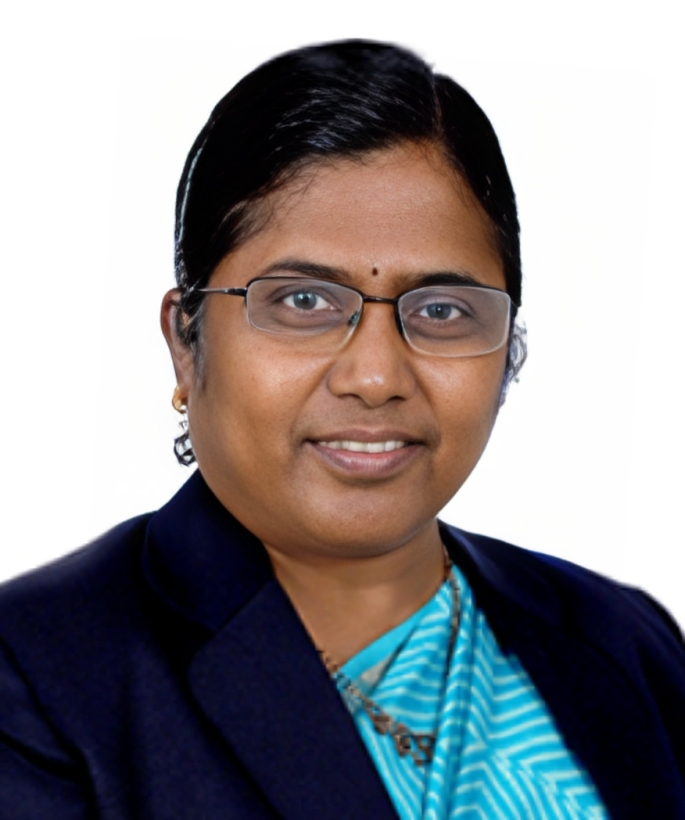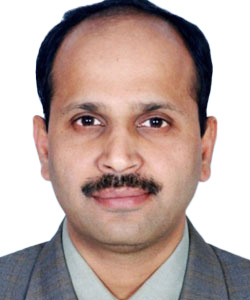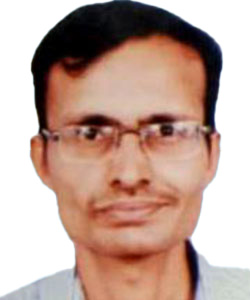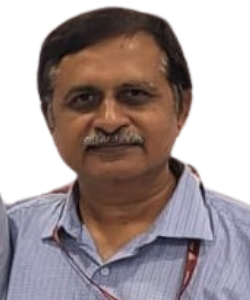

Satellite communication is on the verge of revolutionizing the global telecommunications industry, including India, as new satellite constellations offer unparalleled global coverage and connectivity. India's recently passed Telecommunications Act (2023) emphasized the need for multi-stakeholder discussions to refine the space policy framework. This will accelerate progress towards opening the space sector to private industry, as envisioned by the Hon’ble Prime Minister.
India's space sector initiative introducing the Space Policy, 2023 allows Non-Governmental Entities (NGEs) to participate fully across all space activities. Union Minister of State for Science & Technology, Dr. Jitendra Singh emphasized, "The private sector plays critical role in advancing India's space technology and exploration efforts". To facilitate this participation, the Indian National Space Promotion and Authorization Centre (IN-SPACe) was established, which actively supports private companies through various schemes and initiatives.
To address these challenges and opportunities, the ITU-APT Foundation of India (IAFI) is hosting the India Space Policy Conference 2024 (ISPC-24) on May 27-28 in New Delhi. This two-day event will convene key industry leaders, policymakers, and experts for a critical discussion on shaping India's space communications sector, to propel India's position in the global satellite communications landscape.
ISPC-24 promises a dynamic program featuring thought-provoking keynote speeches, interactive panel discussions, in-depth technical sessions, and engaging workshops. Attendees will discuss the latest advancement in satellite communication systems, space-based applications, remote sensing, space exploration, and satellite navigation. This immersive experience will provide valuable networking and collaboration opportunities, allowing attendees to gain insights and establish connections with industry leaders and peers.
ISPC-24 provides a platform for participants to exchange ideas, showcase their research, and discuss challenges and opportunities in the ever-evolving field of satellite and space communication technology.
Chief Guest

Guest of Honour
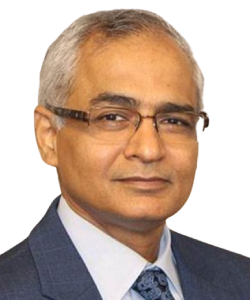
This session will address satellite licensing principles for India and other Asian countries. This session serves as a pivotal platform to explore and dissect the intricate landscape of satellite licensing issues also in view of emerging NGSO constellations. As the space economy burgeons with unprecedented vigour, propelled by a surge in both public and private investments, the importance of robust regulatory frameworks cannot be overstated. India, with its burgeoning space program and ambitious goals, stands at the forefront of this transformative era. Within this session, we will embark on an illuminative journey, addressing six fundamental questions that encapsulate the essence of satellite licensing in India.
The session will focus on the planning considerations for the upper 6 GHz band, spanning from 6425 to 7125 MHz, and the issues surrounding spectrum sharing between satellites, Wi-Fi and IMT services. As demand for broadband connectivity surges, particularly in urban areas, reconciling the competing needs of satellite and terrestrial services within this frequency range becomes imperative. The session will also delve on the lower 6GHz band from 5925 to 6425 MHz, and the implications of already delayed WiFi delicensing. As WiFi emerges as a ubiquitous connectivity enabler, especially in densely populated areas and urban centres, the allocation of spectrum in the lower 6 GHz band assumes heightened significance. Use of the Ka band spectrum for satellites and IMT services emerges as another focal point of our discussion, encapsulating also the nuances of coexistence and collaboration within this frequency range. Spectrum planning for E and V bands is key to fostering economic development and innovation. As nations seek to harness the transformative power of millimetre-wave frequencies for next-generation communication services and emerging technologies, strategic spectrum planning assumes critical importance. By elucidating the regulatory frameworks, technical considerations, and policy imperatives surrounding E and V band spectrum utilization, we aim to catalyse innovation, drive economic growth, and foster inclusive development.
This session will explore of the transformative potential of next-generation NGSO satellite technologies in fostering ubiquitous connectivity across the globe. As societies become increasingly interconnected and digitalized, the imperative of ensuring seamless and reliable connectivity for all emerges as a pressing priority. NGSO satellite networks emerge as a linchpin in bridging the digital divide and enabling ubiquitous access to high-speed internet services extending coverage to underserved regions, and enhancing resilience in the face of natural disasters and infrastructure disruptions. Direct to Device (D2D) and Hybrid Connectivity models, wherein NGSO satellites play a pivotal role in delivering seamless connectivity to a diverse array of end-user devices needs a careful look at the technological, regulatory, and market dynamics shaping these connectivity paradigms. Along with the role of Low Earth Orbit (LEO) and Medium Earth Orbit (MEO) satellite constellations, emerging technologies such as Low Altitude Platform Stations (LAPS), High Altitude Platform Stations (HAPS), and Hybrid Integrated Broadband Systems (HIBS) also merit consideration.
The focus on Equivalent Power Flux Density (EPFD) limits outlined in Article 22, presents a pivotal opportunity to assess and potentially refine regulatory frameworks governing satellite communications. The key question is whether there's a need to revisit Article 22. Given the rapid advancements in satellite technology and the evolving demands of the space industry, reassessing the limits outlined in Article 22 is a tricky issue. This entails evaluating the effectiveness of existing protection mechanisms in addressing interference concerns, streamlining processes to accommodate new satellite constellations, and enhancing collaboration among stakeholders to optimize spectrum utilization. Power limits on IMT stations emissions in the frequency bands shared with satellite services have been set, aiming to prevent harmful interference to satellite receivers and ensure equitable spectrum access.
In this session, we will navigate the intricate landscape of space governance, examining the roles of key international bodies such as the International Telecommunication Union (ITU) and the United Nations (UN) in promoting space sustainability. Additionally, we will explore the feasibility and necessity of implementing binding regulations to safeguard space environments and preserve orbital resources for future generations. The session will consider the Space Sustainability frameworks established by the ITU and the UN. The ITU plays a pivotal role in coordinating the allocation of radiofrequency spectrum and satellite orbits to prevent harmful interference and promote the efficient use of space resources. In contrast, the United Nations Office for Outer Space Affairs (UNOOSA) and the UN Committee on the Peaceful Uses of Outer Space (COPUOS) spearhead efforts to develop international norms and guidelines for space activities, including the mitigation of space debris and the sustainable management of space traffic. By comparing and contrasting the approaches of these two organizations, we aim to identify synergies and gaps in existing frameworks for promoting space sustainability. Central to our dialogue is the question of whether binding regulations are necessary to ensure the long-term sustainability of outer space activities. While voluntary guidelines and non-binding agreements have been instrumental in shaping responsible behaviour in space, the proliferation of space debris and the intensification of space activities underscore the need for stronger regulatory mechanisms. Through a rigorous examination of the advantages and challenges associated with binding regulations, we seek to evaluate the feasibility of establishing enforceable rules to govern space activities, including the prevention of space debris generation, the mitigation of collision risks, and the sustainable use of orbital slots and frequencies.
In this session, we will navigate the intricate landscape of space governance, examining the roles of key international bodies such as the International Telecommunication Union (ITU) and the United Nations (UN) in promoting space sustainability. Additionally, we will explore the feasibility and necessity of implementing binding regulations to safeguard space environments and preserve orbital resources for future generations. The session will consider the Space Sustainability frameworks established by the ITU and the UN. The ITU plays a pivotal role in coordinating the allocation of radiofrequency spectrum and satellite orbits to prevent harmful interference and promote the efficient use of space resources. In contrast, the United Nations Office for Outer Space Affairs (UNOOSA) and the UN Committee on the Peaceful Uses of Outer Space (COPUOS) spearhead efforts to develop international norms and guidelines for space activities, including the mitigation of space debris and the sustainable management of space traffic. By comparing and contrasting the approaches of these two organizations, we aim to identify synergies and gaps in existing frameworks for promoting space sustainability. Central to our dialogue is the question of whether binding regulations are necessary to ensure the long-term sustainability of outer space activities. While voluntary guidelines and non-binding agreements have been instrumental in shaping responsible behaviour in space, the proliferation of space debris and the intensification of space activities underscore the need for stronger regulatory mechanisms. Through a rigorous examination of the advantages and challenges associated with binding regulations, we seek to evaluate the feasibility of establishing enforceable rules to govern space activities, including the prevention of space debris generation, the mitigation of collision risks, and the sustainable use of orbital slots and frequencies.
This session will address satellite licensing principles for India and other Asian countries. This session serves as a pivotal platform to explore and dissect the intricate landscape of satellite licensing issues also in view of emerging NGSO constellations. As the space economy burgeons with unprecedented vigour, propelled by a surge in both public and private investments, the importance of robust regulatory frameworks cannot be overstated. India, with its burgeoning space program and ambitious goals, stands at the forefront of this transformative era. Within this session, we will embark on an illuminative journey, addressing six fundamental questions that encapsulate the essence of satellite licensing in India.
The session will focus on the planning considerations for the upper 6 GHz band, spanning from 6425 to 7125 MHz, and the issues surrounding spectrum sharing between satellites, Wi-Fi and IMT services. As demand for broadband connectivity surges, particularly in urban areas, reconciling the competing needs of satellite and terrestrial services within this frequency range becomes imperative. The session will also delve on the lower 6GHz band from 5925 to 6425 MHz, and the implications of already delayed WiFi delicensing. As WiFi emerges as a ubiquitous connectivity enabler, especially in densely populated areas and urban centres, the allocation of spectrum in the lower 6 GHz band assumes heightened significance. Use of the Ka band spectrum for satellites and IMT services emerges as another focal point of our discussion, encapsulating also the nuances of coexistence and collaboration within this frequency range. Spectrum planning for E and V bands is key to fostering economic development and innovation. As nations seek to harness the transformative power of millimetre-wave frequencies for next-generation communication services and emerging technologies, strategic spectrum planning assumes critical importance. By elucidating the regulatory frameworks, technical considerations, and policy imperatives surrounding E and V band spectrum utilization, we aim to catalyse innovation, drive economic growth, and foster inclusive development.
This session will explore of the transformative potential of next-generation NGSO satellite technologies in fostering ubiquitous connectivity across the globe. As societies become increasingly interconnected and digitalized, the imperative of ensuring seamless and reliable connectivity for all emerges as a pressing priority. NGSO satellite networks emerge as a linchpin in bridging the digital divide and enabling ubiquitous access to high-speed internet services extending coverage to underserved regions, and enhancing resilience in the face of natural disasters and infrastructure disruptions. Direct to Device (D2D) and Hybrid Connectivity models, wherein NGSO satellites play a pivotal role in delivering seamless connectivity to a diverse array of end-user devices needs a careful look at the technological, regulatory, and market dynamics shaping these connectivity paradigms. Along with the role of Low Earth Orbit (LEO) and Medium Earth Orbit (MEO) satellite constellations, emerging technologies such as Low Altitude Platform Stations (LAPS), High Altitude Platform Stations (HAPS), and Hybrid Integrated Broadband Systems (HIBS) also merit consideration.
The focus on Equivalent Power Flux Density (EPFD) limits outlined in Article 22, presents a pivotal opportunity to assess and potentially refine regulatory frameworks governing satellite communications. The key question is whether there's a need to revisit Article 22. Given the rapid advancements in satellite technology and the evolving demands of the space industry, reassessing the limits outlined in Article 22 is a tricky issue. This entails evaluating the effectiveness of existing protection mechanisms in addressing interference concerns, streamlining processes to accommodate new satellite constellations, and enhancing collaboration among stakeholders to optimize spectrum utilization. Power limits on IMT stations emissions in the frequency bands shared with satellite services have been set, aiming to prevent harmful interference to satellite receivers and ensure equitable spectrum access.
In this session, we will navigate the intricate landscape of space governance,
examining the roles of key international bodies such as the International
Telecommunication Union (ITU) and the United Nations (UN) in promoting space
sustainability. Additionally, we will explore the feasibility and necessity of
implementing binding regulations to safeguard space environments and preserve
orbital resources for future generations.
The session will consider the Space Sustainability frameworks established by the ITU
and the UN. The ITU plays a pivotal role in coordinating the allocation of
radiofrequency spectrum and satellite orbits to prevent harmful interference and
promote the efficient use of space resources. In contrast, the United Nations Office
for Outer Space Affairs (UNOOSA) and the UN Committee on the Peaceful Uses of
Outer Space (COPUOS) spearhead efforts to develop international norms and
guidelines for space activities, including the mitigation of space debris and the
sustainable management of space traffic. By comparing and contrasting the
approaches of these two organizations, we aim to identify synergies and gaps in
existing frameworks for promoting space sustainability. Central to our dialogue is the
question of whether binding regulations are necessary to ensure the long-term
sustainability of outer space activities. While voluntary guidelines and non-binding
agreements have been instrumental in shaping responsible behaviour in space, the
proliferation of space debris and the intensification of space activities underscore the
need for stronger regulatory mechanisms. Through a rigorous examination of the
advantages and challenges associated with binding regulations, we seek to evaluate
the feasibility of establishing enforceable rules to govern space activities, including
the prevention of space debris generation, the mitigation of collision risks, and the
sustainable use of orbital slots and frequencies.
WRC-27 will make critical decisions regarding the allocation and utilization of radio frequency spectrum for satellite services. In particular we will explore agenda items 1.2, 1.4, 1.5, 1.10, 1.13 and 1.14 relating to the allocation of spectrum to various Satellite Services reflecting the evolving demands of the satellite communications industry and the imperative of accommodating emerging technologies and applications. The challenges and opportunities surrounding additional allocations for Fixed Satellite Services (FSS) in Ku band also needs some critical considerations. As demand for high-throughput satellite broadband services continues to soar, reconciling the interests of FSS operators and terrestrial wireless services within the Ku band becomes paramount. The inclusion of the Moon Agenda in WRC-27 deliberations underscores the growing significance of lunar exploration and utilization in the global spectrum management discourse. As nations embark on ambitious lunar missions and space exploration endeavours, the need for coordinated spectrum planning and regulatory frameworks for lunar communications becomes increasingly pronounced. Further a number satellite regulatory issues will be addressed by WRC-27, including agenda items 1.1 and 7
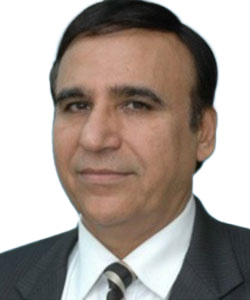
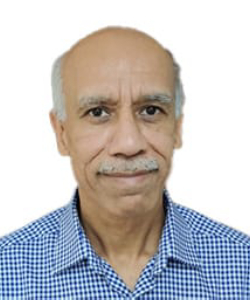
Sh. Ritu Ranjan Mittar is the Deputy Director General & Head of Telecom Engineering Centre (TEC), He is an ITS officer of 1985 batch having experience of over 30 years of services in various capacities in the Department of Telecommunications, Government of India. Before taking over the charge of Sr. DDG & Head TEC, he was DDG (Telecom Security) in TEC New Delhi He is a graduate in Electronics Engineering from Punjab Engineering College, Chandigarh in 1985. He also possesses Diploma in “PUBLIC POLICY SUSTAINABLE DEVELOPMENT SDG GOALS" from TERI in 2018.
He has vast experience in the area of Standardization of Telecom Equipment’s & Networks including Next Generation Networks (NGN), Spectrum management & Radio regulations, Planning and Execution of telecom /ICT project, Telecom & Cyber Security, IPv6 Ready Logo, Telecom Regulations etc.
During his tenure in TEC New Delhi as DDG (Telecom Security), he was involved in the preparation of the framework of Security Testing in India which is the basis of formulation of Indian Telecom Security Assurance Requirements. He was also involved in the formulation of standards related to Security Testing of Telecom Networks. He successfully implemented IPv6 Ready Logo Lab in TEC New Delhi which is the only sixth lab in the world to get this Accreditation.
During his posting in North East LSA, he also handled several enforcement functions related to TSP and ISP. He is actively involved and contributor in the INU-1 standardization activities and for his outstanding contributions, he has been appointed as Chairman of ITT-T Study Group-11 (Signalling requirements, protocols, test specifications and combating Counterfeit telecommunication ICT devices) at recently concluded WTSA20 Assembly session of ITU-T at Geneva in March 2022. He will remain as chairperson of ITU-T SG11 for the period of 2022-2024.
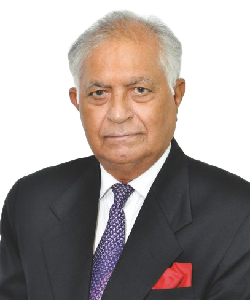
Mr. TIlak Raj Dua is the Director General, DIPA and Chairman ITU-APT. The total experience of Mr. Dua accounts to more than 35 years in the telecom sector. His experience includes all facets of telecom be it Product Development, Business Development, Telecom Licensing, Regulatory issues with respect to interconnection / roaming / unified licensing and infrastructure sharing / Mobile Number Portability, Spectrum Management, Spectrum Related Issues Like Spectrum Pricing, Efficient Utilization and Spectrum reframing, finalization of joint ventures, Technical collaboration, Introduction of new product, Launch of cellular services in India and finalization of licence agreements / interconnect agreements etc. Over the years in the industry, Mr. Dua have held prestigious positions as Director in leading telecom companies like Bharti Airtel Ltd., Shyam Telecom Ltd., Cellular Operators Association of India (COAI), Vice Chairman and Global ICT Standardization Forum for India. Mr. Dua is an engineering graduate with a diploma in Business Management and export Marketing.

Mentor, Design Strategist & Architect; and Technology Advisor with Organizations of National & International repute in the fields of Electrical, Electronics, Semiconductor, ICT and Sustainability.
Passionate to always stay at the forefronts of the technologies, and, to be able to INTERFACE the various evolving & upcoming technologies to the different segments/aspects of the business & ‘society at large’. Strong expertise in designs for cross domain products, systems and solutions. Since early 90’s, been actively instrumental in providing design solutions & support to Semiconductor Companies to promote new devices in Indian Market and played a pivotal role in the ESDM & ICT Eco -System with pro-active support. Been supporting leading business houses in developing latest Products, Systems & Solutions in the fields of Smart Metering, Smart Homes, Smart Buildings & Smart Cities, Internet of Things, Convergence & Energy Efficiency; trying to make our earth the Smart n Green Planet
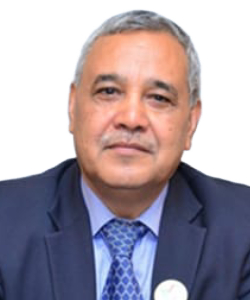
An International expert in NGN technologies, Regulation, Interconnection and Broadband with 40+ years experience in all aspects of Telecom, including 25 years with Govt. and Regulator, Satya is publicly recognized as an Analyst, Author, Advocate and Advisor on ICT related Policies, Projects and Business. After his post-graduation from IISc. Bangalore, he joined the Ministry of Communication in 1981 and Ministry of Railways in 1983. He is recipient of Minister of Railways Award for Outstanding Performance for the Delhi Area Digitalisation Project. A triple master in Electronics Design Technology, IT Management and Telecom Policy and Regulation, globally known as “NGNguru” he is a trainer and coach for telecommunication technologies, policy and regulation and a Regulatory advocate. Author of "Everything over IP-All you want to know about NGN". He has also authored a concept called “Job Factory- Converting Unemployment into Intraprenuership”. His recent research-based work, “Long Tail - Walking the Extra Mile on Rural Broadband Business”, brings out the innovative sustainable business models for rural broadband connectivity. He has also established and mentoring and consulting startup named SAAM CorpAdvisors providing “Govt. Affairs as Managed Service”. He is Honorary Secretary General of ITU-APT Foundation of India. Additionally, he is Vice-President and Trustee of DCIF and chairs BIF committee on Rural Digital Infrastructure. He founded NGN Forum in India to spread awareness and capacity building in the field of emerging technologies. As a member of Expert panel of Commonwealth Telecom Organisation, he conducts training programs in the areas of NGN Technologies, Broadband Policy and Regulation, Interconnection Costing in NGN Era, Spectrum Management, IPV6, Artificial Intelligence, Blockchain and Blue-Ocean Strategy.He recently established Blockchain For Productivity Forum as its Chairman, to develop Use Cases for this to create impact on Businesses. He is first Indian recipient of IPv6 Hall of Fame – 2019 entry by Global IPv6 Forum and also the Chairman of India IPv6 Council. Presently, he is working as Chairman, BLUETOWN, India & BIMSTEC, S. Asia to forge newer partnerships and “Making It Happen” its Vision of “Connecting the Unconnected people living in Rural areas of World”.

Vimal Wakhlu is the former Chairman & Managing Director of Telecommunications Consultants India Ltd.(TCIL),a Government of India Enterprise, Past President of The Telemedicine Society of India and the Ex-Board Member of ISfTeH (International Society for Telemedicine & e-Health). A Bachelor of Engineering (B.E.) from National Institute of Technology, Srinagar 1977, and MBA Marketing from IGNOU, he has about 43 years of experience in the field of Telecom and Information Technology, including e-Networks, Mobile, etc. He has been instrumental in the successful implementation of the prestigious Government of India’s Pan African e-Network Project, a project envisioned by Dr. APJ Abdul Kalam, the Former President of India, providing a platform to 48 nations in Africa to India for Education and Health Services, and also the SAARC e-Network.
Starting his career with NHPC in 1977, followed by Overseas Communications Services (later VSNL and now Tata Communications Ltd.) till 1983. As an officer of the Indian Telecommunications Service he held various positions in DOT (Department of Telecom) from 1983 to 2000 and BSNL from 2000 to 2006, including Director Satellite Maintenance, Western Telecom Region, and General Manager Mobile Services in Maharashtra and the North East Circles.He has been involved in TCIL in various capacities From December 2006 till January 2016, including Executive Director (Transmission) and Director (Technical) and Chairman & Managing Director. TCIL has scaled new heights during this phase, besides bagging some large value global and domestic projects. He has served as Director on the Boards of TTL (Tamil Telecommunications Limited) and TBL International, TCIL Saudi Ltd., Bharati Hexacom Limited.
He is a Certified Project Management Professional (PMP) of the Project Management Institute (PMI) of Pennsylvania, United States. A Life Fellow of IETE (Institution Of Electronics and Telecom Engineers),Member of TRAC committee. A Life Member of the ITU APT Foundation of India and its current Vice President. A Member of IEEE (Institution of Electrical and Electronics Engineers), A Member of DCIF (Digital Communications India Forum) and its current Vice President.He has been a Visiting faculty on Business of Telecom Management in Narsee Monjee Institute of Management Studies (NMIMS), and Advanced Mobile Communications, Satellite and Optical Fiber Communication in University of Mumbai, Pune University and Advanced Level Telecom Training Centre (ALTTC).He has been delivering lectures on how technologies can be leveraged for entrepreneurship.
He has been participating in panel discussions on various fora, on a wide variety of subjects, including Education, Health, Disaster Management, Financial inclusion, Environment,Energy Management, Security including Cyber Security, Governance, Telecommunication and Information Technology, Artificial Intelligence, Internet of Things etc.His specialization is in leveraging technology for mitigating challenges faced by underprivileged people of developing nations. Currently a freelance Consultant advising companies on Technology transfer, Capacity building, Project execution and some of the state governments on Project/Program Management. Director at Sustainable Smart Solutions Pvt. Ltd. An Expert in Working Groups on United for Smart Sustainable Cities (U4SSC),an initiative of ITU (International Telecommunications Union)-UNECE (United Nations Economic Commission on Europe) An Expert in Focus Group on Artificial Intelligence for Environmental Efficiency (FGAI4EE), of ITU (International Telecommunications Union)
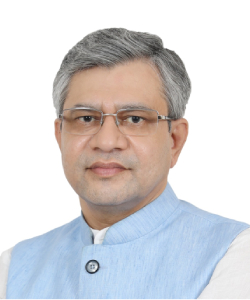
Shri Ashwini Vaishnaw is an Indian politician and former IAS officer who is currently serving as the 39th Minister of Railways, 55th Communications Minister and 2nd Electronics & Information Technology Minister in Government of India since 2021 and a member of the Rajya Sabha representing Odisha since 2019.
He graduated from MBM Engineering College (JNVU) Jodhpur in 1991 with a gold medal in an electronic and communications engineering course and then completed his M.Tech. from IIT Kanpur, before joining the Indian Administrative Services in 1994 with an all-India rank of 27. In 2008, Vaishnaw left for the US to do his MBA from Wharton School of the University of Pennsylvania.
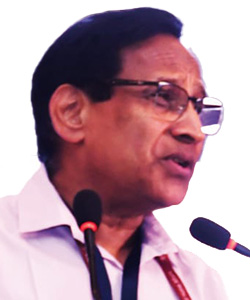

Avinash Agarwal is an ITS Officer of the 1992 batch. He has 30 years of extensive experience in Telecommunications, Information Technology, and Broadcasting while serving in various positions in the Government of India.
Presently, he is posted as Deputy Director General at Telecommunication Engineering Centre, India’s Standards Setting Organisation, where is in-charge of the Radio, Standardisation, and Convergence & Broadcasting divisions.
Previously, as Additional Director General (IT) at Prasar Bharati, he headed various digital transformation initiatives for the twin networks of Doordarshan and All India Radio and also successfully delivered their Global Digital Platform and NewsOnAir Mobile App. This involved live streaming of 230+ radio channels, live TV, text news in multiple languages, podcasts, etc.
He also served as State Head Haryana, BBNL for the roll-out of the BharatNet Project for providing Optical Fibre Cable connectivity to 6000+ Gram Panchayats in Haryana.
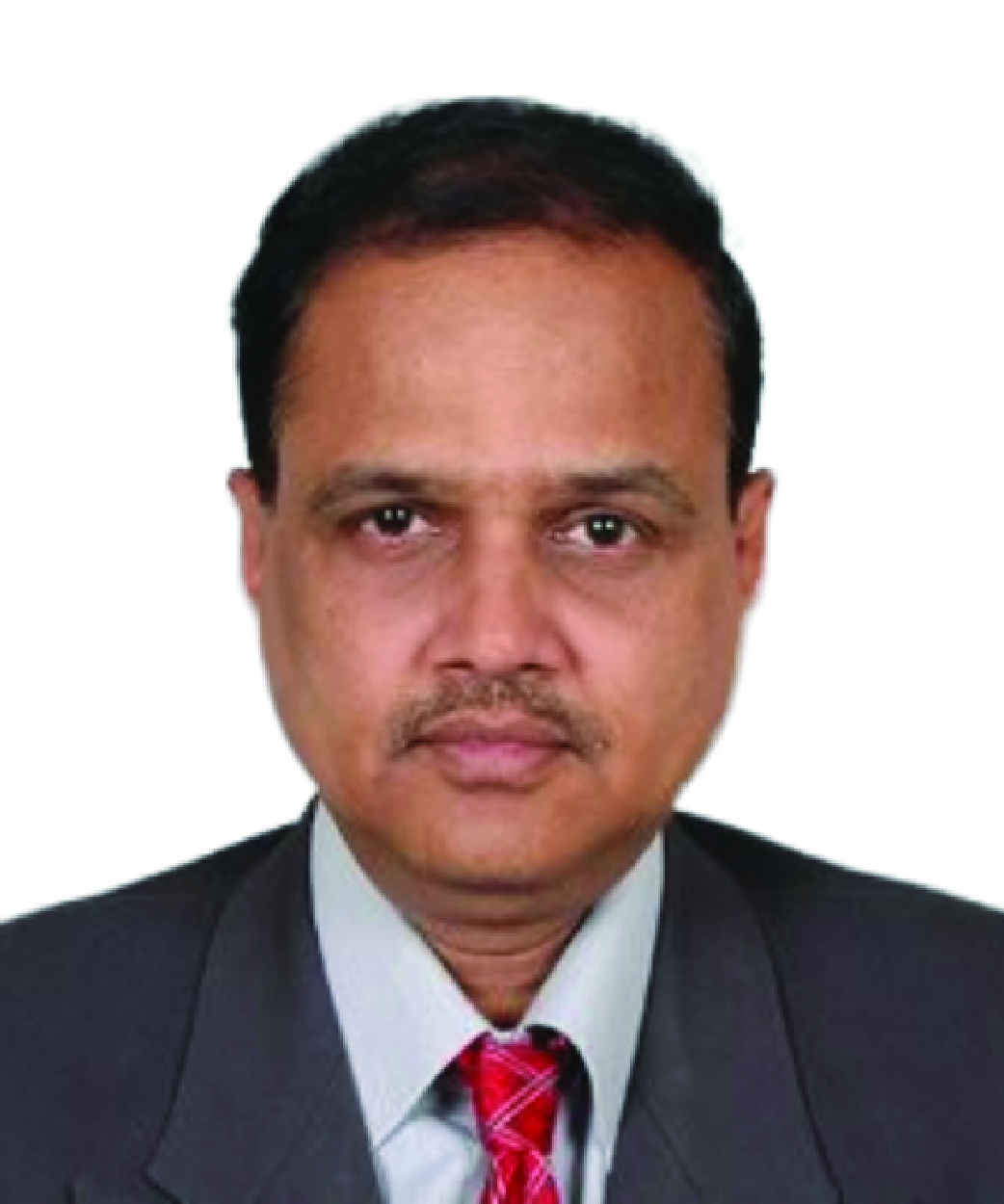
Mr. V. Raghunandan is an Indian Telecommunication Service Officer belonging to 1987 Batch. He is presently working as Secretary, Telecom Regulatory Authority of India (TRAI) at New Delhi and is coordinating all the activities related to Telecom & Broadcasting sectors.
He obtained M.Tech from S.V.University, Tirupati, India. He has a vast experience of 28 years in various capacities in the field of Telecommunications. He was responsible for major Telecom Project executions, telecom policy implementation and Telecom Enforcement in various parts of India. He was bestowed with Visishta Sanchar Seva Padak Award in Dept of Telecom (DOT) for Meritorious services rendered in various remote rural areas for telecom development.
In 2006-2007, he graduated MPA from Lee Kuan Yew School of Public Policy (LKY SPP is one of the top few Public Policy Schools in the world), NUS Singapore.
Earlier, as DDG (International Relations) at DoT (Hq), he coordinated all activities related to Multilateral and Bilateral of High Level Dignitaries in DoT, Ministry of Communications, Govt of India and was responsible for key initiatives related to Establishment of ITU Area office & Innovation Centre in India. He also played key role in effectively presenting India's position on Cyber security related matters to ITU resulting in India reaching Top 10 Rankings in Global Cyber Security Index during 2020. He organized many International and Regional events in India and abroad. He has represented India as Speaker at ITU, BRICS, Commonwealth Telecom Organization (CTO), APT and other Multilateral organizations/International Forums.

Dr Neeraj Mittal is an Indian Administrative Service (IAS) officer belonging to the 1992 Tamil Nadu cadre and presently working as Chairman, Digital Communication Commission (DCC) and Secretary, DoT since Sept, 2023. He completed his graduation from IIT Kanpur and holds MBA degree from Cranfield University, UK. He completed his PhD degree in Economics from Ohio State University, USA.
Dr Neeraj Mittal held several senior positions before joining DoT, including CMD of TN Urban Finance and Infrastructure Development Corporation, Chennai and Principal Secretary (IT) in the Government of Tamil Nadu and many more.
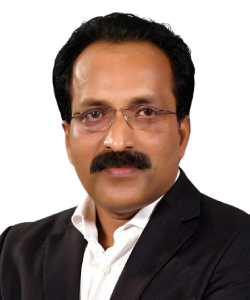
Shri Somanath completed his ME with a Gold Medal from the Department of Aerospace Engineering, IISc, in 1996, specialising in structures, dynamics and control. He will succeed Dr K Sivan, who is also an alumnus of IISc (ME, Department of Aerospace Engineering, 1982).
Shri Somanath is currently the Director, Vikram Sarabhai Space Centre (VSSC), Thiruvananthapuram, where he has overseen the successful launch of PSLV, GSLV and GSLV Mk-III vehicles, and several key technological missions. He conceived and engineered the Small Satellite Launch Vehicle as an on-demand small launcher and test vehicle for human space crew abort test flights. Shri Somanath is an expert in the area of system engineering of launch vehicles. He has made key contributions to the overall architecture, structure, design and integration of PSLV and GSLV Mk-III. As the Project Director of the prestigious GSLV Mk-III launch vehicle, the first experimental flight of LVM3X CARE mission was successfully accomplished on 18 December 2014. This was a national project spanning all the ISRO centres and Indian industries.
He was also the Director of the Liquid Propulsion Systems Centre (LPSC) at Thiruvananathapuram, where he led the development and qualification of India’s first indigenous CE20 cryogenic engine and the C25 stage, successfully flown in the GSLV Mk-III D1 flight. He also played a key role in the successful missions of GSLV with indigenous cryogenic stages and many successful missions of PSLV with the liquid stages realised by LPSC. The development of throttleable engines for the Vikram Lander of Chandrayaan-2 was another important contribution.
Shri Somanath has received several awards and honours for his contributions, including the Space Gold Medal from the Astronautical Society of India, the Merit Award and Performance Excellence award from ISRO, and a Team excellence award for GSLV Mk-III development. He is a Fellow of the Indian National Academy of Engineering, the Aeronautical Society of India and the Astronautical Society of India, and a full member of the International Academy of Astronautics.
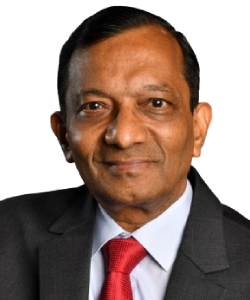
Dr. Pawan Goenka earned his B. Tech. from IIT, Kanpur and Ph.D. from Cornell University, U.S.A. He is a Graduate of Advanced Management Program from Harvard Business School.
His professional experience includes working at General Motors R&D Centre, Detroit, U.S.A., for 14 years and at Mahindra & Mahindra Ltd. for 28 years. At Mahindra he led the development of the Scorpio SUV and built a strong R&D infrastructure and a robust product portfolio. He retired from M&M as MD & CEO on April 1, 2021.
Dr. Goenka serves as the Chairman of the Board of Governors of IIT Madras. He is also the Chairperson of the Steering Committee for Advancing Local value-add and Employment (SCALE), an initiative under the Ministry of Commerce & Industry.

Shri Devusinh Chauhan was born on 29th October, 1964 in Navagam village of Kheda district in the State of Gujarat. He obtained Diploma in Electrical Engineering from the Government Polytechnic College in Porbandar, Gujarat. He worked as an engineer in Akashwani Kendra an organization under the Government of India for 13 years. Subsequently, he left the government service in 2002 to join public life as a politician to serve the people of India.
Shri Devusinh Chauhan won Vidhan Sabha election from Matar constituency of Kheda district of Gujarat in 2007. He was re-elected as Member of Legislative Assembly of Matar in 2012. He was elected as Member of Parliament for the 16th Lok Sabha from Lok Sabha constituency of Kheda, Gujarat in 2014. He again won Lok Sabha Constituency from the same constituency in 2019. He served as a Member of Parliamentary Committee on Water Resources and Defence. He has also served as a Member of Consultative Committee of the Ministry of Communications & Information Technology and Ministry of Food Processing Industries. He has undergone a short course at King’s College, London which was organized by the British High Commission.
He assumed the charge of the Union Minister of State for Communications on 7th July, 2021 in the Council of Minister headed by the Hon’ble Prime Minister Shri Narendra Modi.
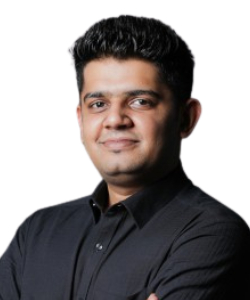
Keyur Gandhi handles Space Regulation & Policy at Dhruva Space , a full-stack Space engineering solutions provider in Hyderabad, India. He actively engages in Legal, Regulatory, Policy and Commercialisation affairs for the company.
Keyur has a proven record of having worked closely on growth and strategy verticals of enterprises in highly regulated ecosystems.
A law graduate from NMIMS - Mumbai, he served as the Student Director of Chancellor’s Challenge, an initiative to foster an entrepreneurship ecosystem across India, leading up to building of a NITI Aayog-funded incubation center.
Keyur is one of the pioneering Regulatory professionals in the Indian Private Space-Technology ecosystems, engaging in regulatory matters in diverse domains across the satellite industry; which include satellite communications, remote sensing, trade controls, public procurements and other related areas. He is also an active contributor in policy matters pertaining to Space activities.

Experienced Product Manager and Product Visionary with a demonstrated history of working in the financial and wireless industries. Strong product management professional skilled in Wireless Networking, Cloud Applications, IT Strategy, OEM Partnerships, Professional Services, Software as a Service (SaaS), and Pre-sales.

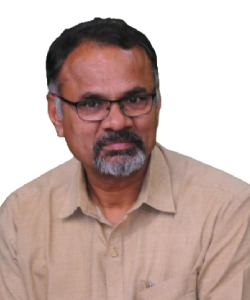
Shri Hanumantha Rayappa, a senior scientist in ISRO. He currently is working as Director, SATCOM Programme Office at ISRO HQ, Bengaluru. He is dealing with frequency management, satcom applications, ground segment, capacity management and satcom planning. His contribution is significant in the planning & realization of Gateways for High Throughput Satellites. He has been a key player in rollout and operations of SatCom networks for societal applications, like Telemedicine, Tele-education, VAST connectivity, Disaster Management, Search & Rescue, etc, which have a greater social relevance. He has contributed for proliferation of NavIC and GAGAN solutions into various applications. He has played an important role in formulating the new policy and guidelines in the Satcom area.
He is a recipient of two Team Excellence Awards of ISRO and IETE – R S Khandpur Gold Medal for tele- education & tele-medicine applications.

Amit Gulati is a Bachelor of Engineering in Electronics from the North Maharashtra University and Masters in Business Administration from Faculty of Management Studies. He is an officer from the Indian Radio Regulatory Service and has over 22 years of experience in spectrum management in various domains including Spectrum monitoring. He is currently the Senior Deputy Wireless Advisor in the Satellite Division of the Wireless Planning and Coordination Wing in the Department of Telecommunications, looking after key issues such as policy issues relating to frequency assignment of existing and new satellite networks, and Satellite Network Filing.
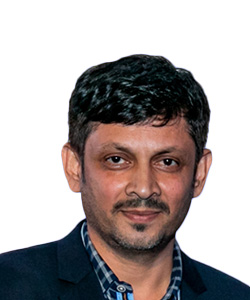
"Currently, he is working as a Senior Deputy Wireless Advisor in the WPC Wing. He coordinates on various radio-frequency spectrum issues with stakeholders to frame our country views for International bodies, such as ITU-R, APT etc. He has played an important role in formulating National Frequency Allocation Plan-2018. He was involved in drafting Indian contributions to WRC-19 and has also participated in WRC-19 He also worked in Wireless Monitoring Organization, DoT where he was involved in carrying out monitoring of radio-frequency spectrum.
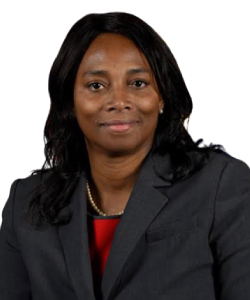
Mrs. Vernita D. Harris is a member of the Senior Executive Service and serves as the Director Electromagnetic Spectrum Enterprise Policy & Programs. In this role, she provides executive leadership, strategic guidance, implementation and direction for management and use of the electromagnetic spectrum, develops and coordinates DoD’s spectrum, Internet, and information and telecommunication policy positions with the Department of State, National Telecommunications and Information Administration (NTIA) and the Federal Communications Commission (FCC). Mrs. Harris serves as the focal point for all matters pertaining to the International Telecommunication Union (ITU). She leads a team of policy experts that coordinates with other federal agencies, our international partners in support of the Department’s and DoD CIO’s missions, goals and objectives regarding the management and use of the electromagnetic spectrum, Internet and information and telecommunications policy goals.
Mrs. Harris began her Federal career in 1999 with the Department of Commerce, NTIA’s Office of Spectrum Management (OSM) where she provided strong leadership necessary to solve multiple radio frequency spectrum management issues domestically and internationally. In 2007, Mrs. Harris transitioned to the Office of International Affairs (OIA) and subsequently became the Deputy Associate Administrator for overall domestic and international policy strategies affecting Internet policymaking, standards development issues, governance issues, cybersecurity, emerging technologies and the digital economy.
Mrs. Harris has led and served on numerous U.S. Delegations to regional and global intergovernmental organizations, including all major UN ITU treaty-making conferences since 2000. Before joining the U.S. Government, Mrs. Harris worked for Iridium, LLC.
Mrs. Harris has a Bachelor’s Degree in Business Administration with Minor in Management, from Trinity College, Washington, D.C.
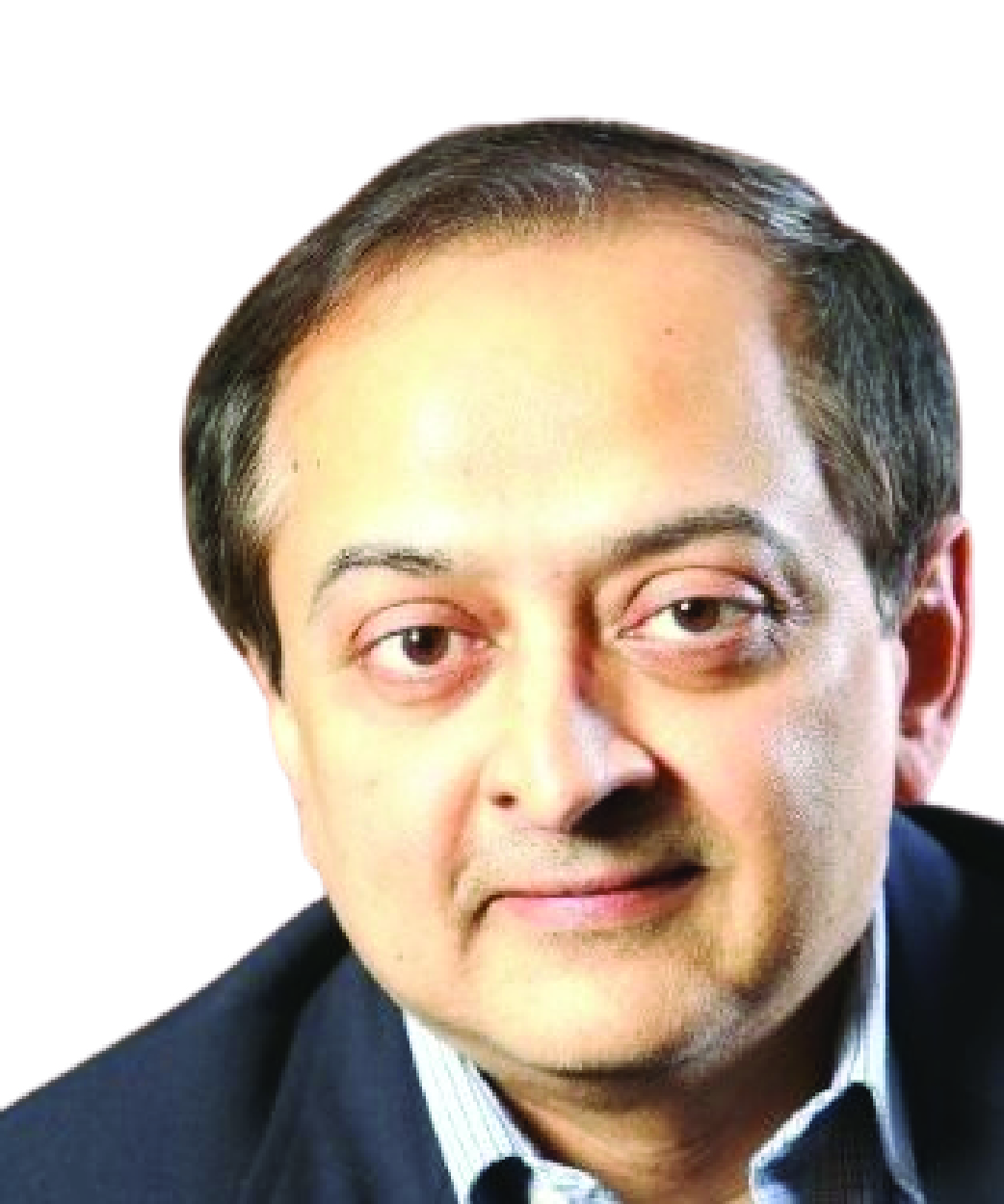
I am a telecommunications professional, providing strategic guidance to industry and government executives on spectrum matters and network evolution, based on data-driven quantitative analysis. I have broad experience in wireless network architecture and spectrum requirements. I am currently working on various spectrum issues related to the nascent 6G technology.
I am recognized as a subject matter expert in 5G and associated emerging applications, who closely monitors technology trends in adjacent industries. I am experienced in leading and mentoring global cross-functional teams, spearheading complex projects. I have a proven track record of delivering on revenue, cost, and quality targets.
Currently, I act as a Senior Spectrum Standardization expert in Nokia Bell Labs . I am experienced in launching multiple internal ventures.
I have 25+ years of experience in wireless and broadband technologies, with expertise in:
|Spectrum Requirements | Business Models| Strategic Planning | Business Development| | 5G, IoT, AI/ML | Open RAN, Virtual/Cloud RAN | |FWA| AR/VR, cV2X | SON, Network Slicing| Solution Architecture | | IMS/Mobile Core| MEC, SDN/NFV | xDSL, HFC, FTTx | 3GPP, IEEE, ITU-R
I hold 6 patents, have 20+ papers in refereed journals and made numerous presentations at professional conferences and industry events.
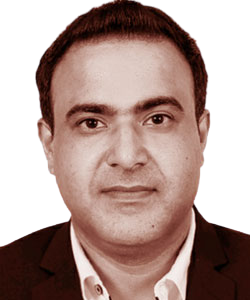
Experienced Wireless & Mobile broadband professional with global exposure, expertise in telecom network strategy, technology, product management, spectrum strategy, ecosystem, service delivery and customer experience.
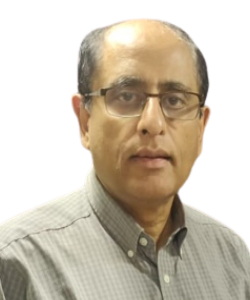
Sesh Simha graduated from the Indian Institute of Technology Bombay, Mumbai. He received the master’s degree in electrical engineering from the University of Michigan. He joined ONE Media 3.0 in August 2016, and is currently the Vice President of Advanced Technology. He has experience as a Professional Adviser, an Educator, and a Speaker in the spectrum, television, telecom, software, and wireless and satellite communications industries. He is the Former Senior Product Manager for Spirent Communications, managing video testing for the wireless industry and a product development manager for the international satellite operator, SES, where he oversaw streaming mobile video trials. He served as a Wireless and Telecom Consultant supporting a wireless operator in its 700 MHz LTE build-out planning as well as working with Cogent Communications, Teleglobe, INTELSAT, and Hughes Network Systems.
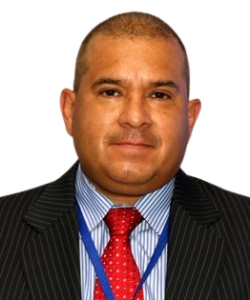
Dante Ibarra, World Radiocommunication Conference (WRC) Director, at Federal Communications Commission (FCC) will speak on the panel World Radiocommunication Conference 2019: The Global Future for Satellites at SATELLITE 2018.
Dante Ibarra is responsible for leading the FCC’s activities and preparatory efforts for the International Telecommunication Union World Radiocommunication Conference (WRC). He leads a FCC team of technical and regulatory experts to develop international spectrum policies and strategies based on U.S. and FCC policies, coordinates with other federal government agencies including the Department of State, National Telecommunications and Information Administration to develop positions for negotiations at international conferences, leads U.S. delegations to international meetings on radio spectrum access and utilization and represents the U.S./CITEL at other WRC regional group preparatory meetings.
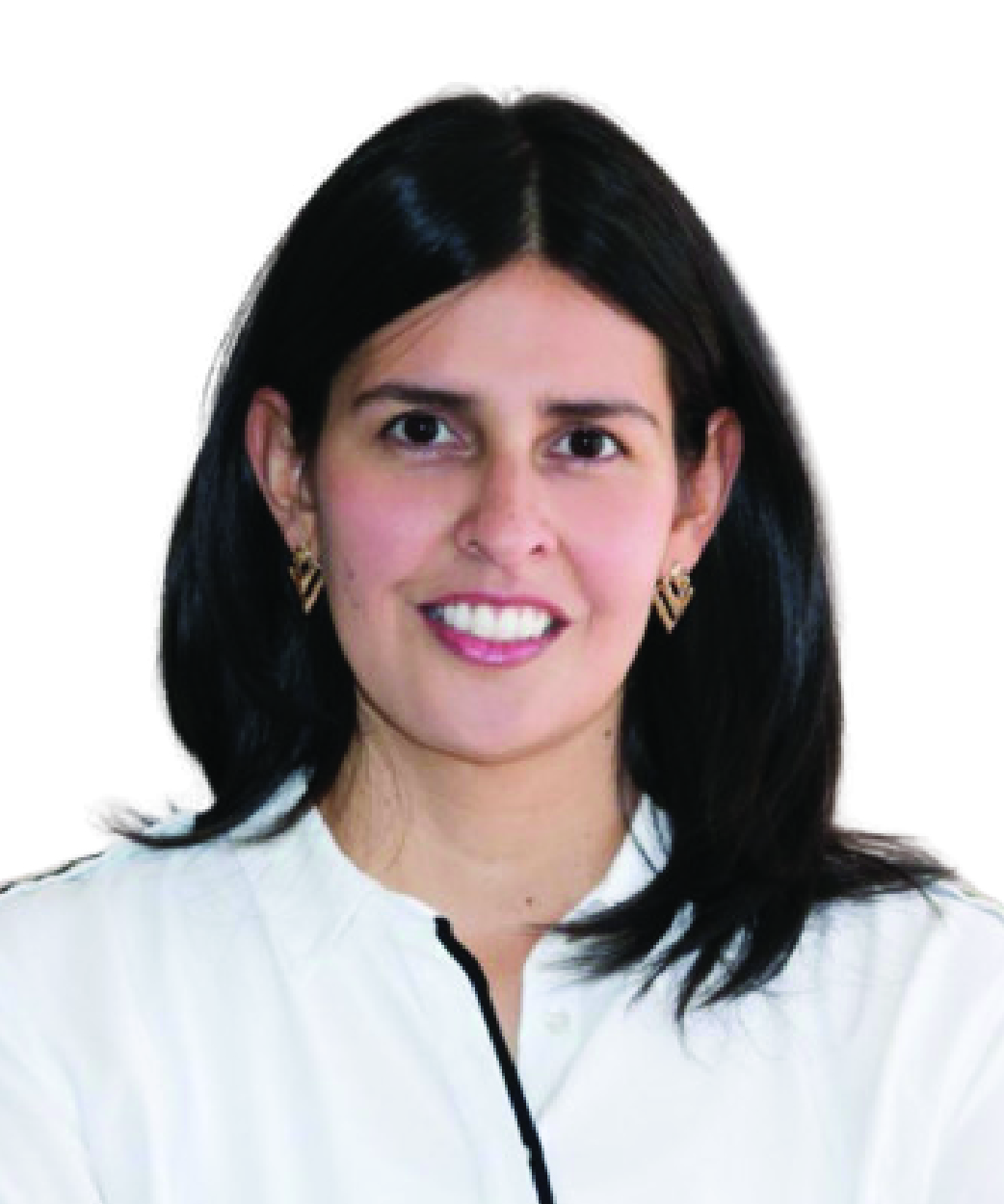
Dr Martha Suarez is President of the Dynamic Spectrum Alliance and has over 15 years of experience in the telecommunications industry. In her current role at the DSA she advocates for laws and regulations that will lead to more efficient and effective spectrum utilization, which is essential to addressing key worldwide social and economic challenges. She spent over three years as General Director of the National Spectrum Agency in Colombia, having originally joined the ANE in 2013. Before that, she was awarded with a Marie Curie Fellowship and worked at the Instytut Technologii Elektronowej ITE in Poland for the Partnership for Cognitive Radio Par4CR European Project. Suarez is an electronics engineer, with a master degree in high frequency communication systems and is Doctor in electronics from the University Paris-Est.
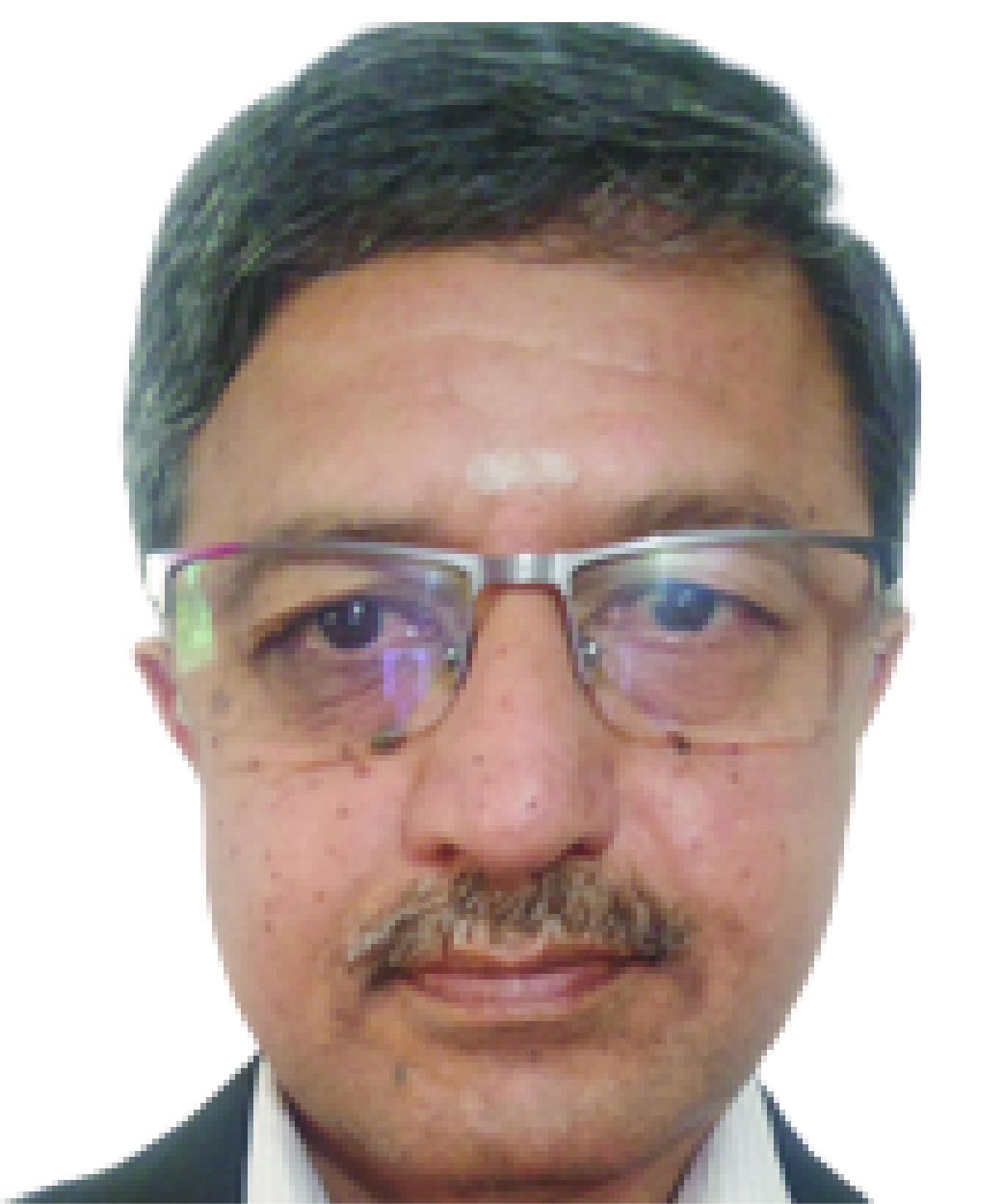
Mr.Kumaramohan has 33 years of experience in ISRO. During the first 16 years he had worked in Space Applications Centre, Ahmedabad on designing beam shaping antennas for ISRO’s INSAT-3 series of communication satellites and development of software related to verifying antenna performance during antenna design and fabrication stages. For the past 17 years he has been working at ISRO Headquarters in the area of Frequency Management involving coordination of orbit-frequency resources required for ISRO’s communication, navigation, remote sensing and Science missions. He has being contributing towards forming India’s views on WRC agenda Items since WRC-12 and also participates in the ITU-R Working Parties, APG, CPM and WRCs since WRC-12. He holds Master degrees in Mathematics and software systems. Currently he is ‘Associate Director’ in Satcom Programme Office at ISRO Headquarters, Bangalore.
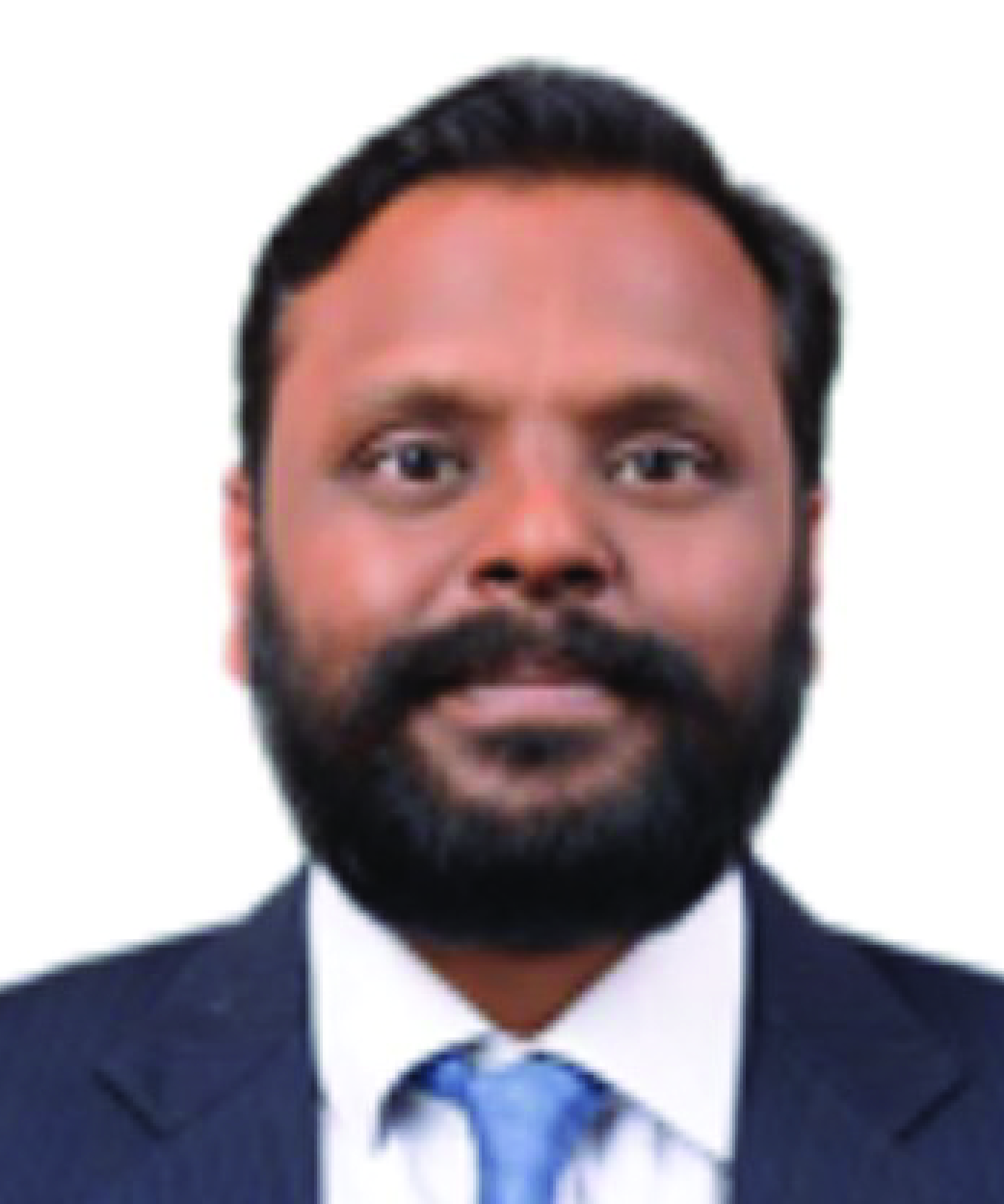
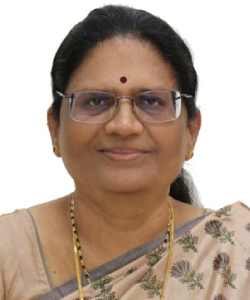
Dr K Rajalakshmi Menon, Distinguished Scientist has been appointed as Director CABS on 31 Dec 2021.
Dr K Rajalakshmi Menon joined DRDO as Scientist B at Aerospace Surveillance Warning and Control (ASWAC), erstwhile Centre for Airborne Systems (CABS) in 1988 after her MSc in Computer Science from University of Poona. She further obtained her Masters in Engineering in the area of Clutter Characterisation from Airborne Platformand a PhD in the area of Target Recognition from Department of Aerospace Engineering, Indian Institute of Science.
She has made significant contributions in design and development of Airborne Surveillance Systems. Her area of expertise includes System Engineering of Complex Systems, Command, Control, Communications,Computers, Intelligence, Surveillance and Reconnaissance (C4ISR), Image Intelligence, Guidance and Control, Battle Management, System Design and System Analysis of Airborne Radars and EW sensors.
As Team Leader for the Clutter Characterisation Project, she was instrumental in integration and flight testing of a radar on an aircraft for the first time in the country. During initial stages of her illustrious career, her contributions have been in the field of Airborne Radar Performance Analysis,design of Ultra-Wideband Radars andSystem design and Simulation, System Test and Integration for the Airborne Surveillance Platform (ASP) Project and in Management Information System (MIS) as Project manager.
She has played a pivotal role in the design, development, integration, testing and delivery of indigenous Airborne Early Warning & Control System (AEW&C). In the AEW&C Program, she took up many leadership roles; as Deputy Project Director and Project Director for System Engineering (SE), System Test and Integration Rig (STIR) andGround Exploitation System (GES)and design & development of Command and Control (C2) functions, viz., Threat Evaluation, Weapon Assignment, Intercept Controland Guidance for Battle Management to enable Network Centric Operations of AEW&C. The C2 functionalities meeting the IAF tactics has been developed for the first time in the country. She has been pioneer in evolving the platform requirements for the AEW&C role and managing the interfaces for the complex system of systems program and leading the aircraft integration, operation and maintenance activities. As, coordinator for indigenous datalinks development, she has successfully demonstrated the communication capability between AEW&C and Ground Exploitation System meeting the operational role.
She rose to the post of Associate Programme Director (AEW&C) in 2015 and led the System Engineering, Mission System Integration and Flight Testing, which culminated into induction of AEW&C system into IAF, in Initial Operational Capability (IOC) configuration in Feb 2017. She led all the flight test campaigns of AEW&C from 2013 to 2017. As System Engineer of AEW&C, she applied the principles successfully from concept to delivery, resulting in India becoming the fifth country in the world to have an indigenous AEW&C system.
After the successful induction of AEW&C in IOC configuration, she led the design and development of Imaging Radars for UAVs, Fighters, Satellites and manned platforms during her brief tenure at LRDE, Bangalore from Jul 2017 to Jan 2019, wherein introduced novel technologies for developing very high resolution Synthetic Aperture Radar(SAR). She was also the Associate Director at LRDE.
Subsequently, as Associate Director, CABS, she led various projects and programs on Air to Ground Surveillance, specifically towards developing the technologies for Intelligence, Surveillance and Reconnaissance (ISR). She has been the Project Director for ISR Project and Program Director-Designate for Intelligence, Surveillance, Targeting and Reconnaissance (ISTAR) Program for IAF and for a similar program for NTRO. In these projects she has guided the teams towards design and development of IMINT analysis for defence using AI/ML/DL technologies.
She has published several scientific papers in National and International Journals, Seminars & Conferences.
She is member of Institute of Council of System Engineers (INCOSE), Senior Member IEEE and Chairperson, IEEE AESS, Bangalore Chapter, Fellow of IETE and Life Member of Aeronautical Society of India(AeSI).
She isa recipient of Laboratory Scientist of the year Award in 2006, Technology Group Award in 2008 for Mission System Controller Development, DRDO Award for Path Breaking Research for developing critical technologies for AEW&C in 2012, DRDO Scientist of the year Award in 2015 andDRDO Technology Group Award for the design and development of Intercept Control and Battle Management System for AEW&C in 2018.
She is also a recipient ofOutstanding Women Scientist/Technologist/ Engineer Award for2018 from Aeronautical Society of India and Distinguished Alumni Award for 2019 from the prestigious Indian Institute of Science.She is one of the 51 Women Achievers in STEM, all over India and is profiled in e-book launched by Confederation of Indian Industries (CII) in 2021.
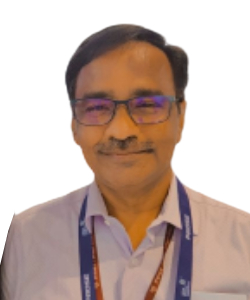
Vijay Kumar Roy is a seasoned telecommunications expert serving as the Deputy Director General (Standards-R&D-Innovation) in the Department of Telecommunications, Government of India. He holds a B.Tech. in Electronics Engineering from REC (NIT), Calicut, Kerala, and an MBA with dual specialization in International Business and Finance.
In his illustrious career, Mr. Roy has played pivotal roles in shaping India's telecom sector. Notably, he led the Indian delegation in standardization activities, securing India's place in global 6G development. He also contributed significantly to the drafting of the "Bharat 6G vision document" and a key figure in iCET, fostering international collaboration on critical technologies. He has received many awards for his significant contributions in Telecom sector.
Mr. Roy's contributions extend to leadership roles in ITU-T Study Group 2, where he serves as Vice Chairman and Associate Rapporteur. He has been instrumental in formulating various 5G and 4G standards and test schedules in India, actively participating in international meetings.
As an ITU Expert, he made significant contributions to Bhutan's telecommunications development, including SOP development, capacity building, and EMF compliance testing. His dedication to advancing telecommunications standards and technology has been recognized and appreciated by ITU.
In summary, Vijay Kumar Roy is a highly accomplished professional who has made substantial contributions to India's telecom sector, especially in the areas of standardization, international collaboration, and technology advancement.
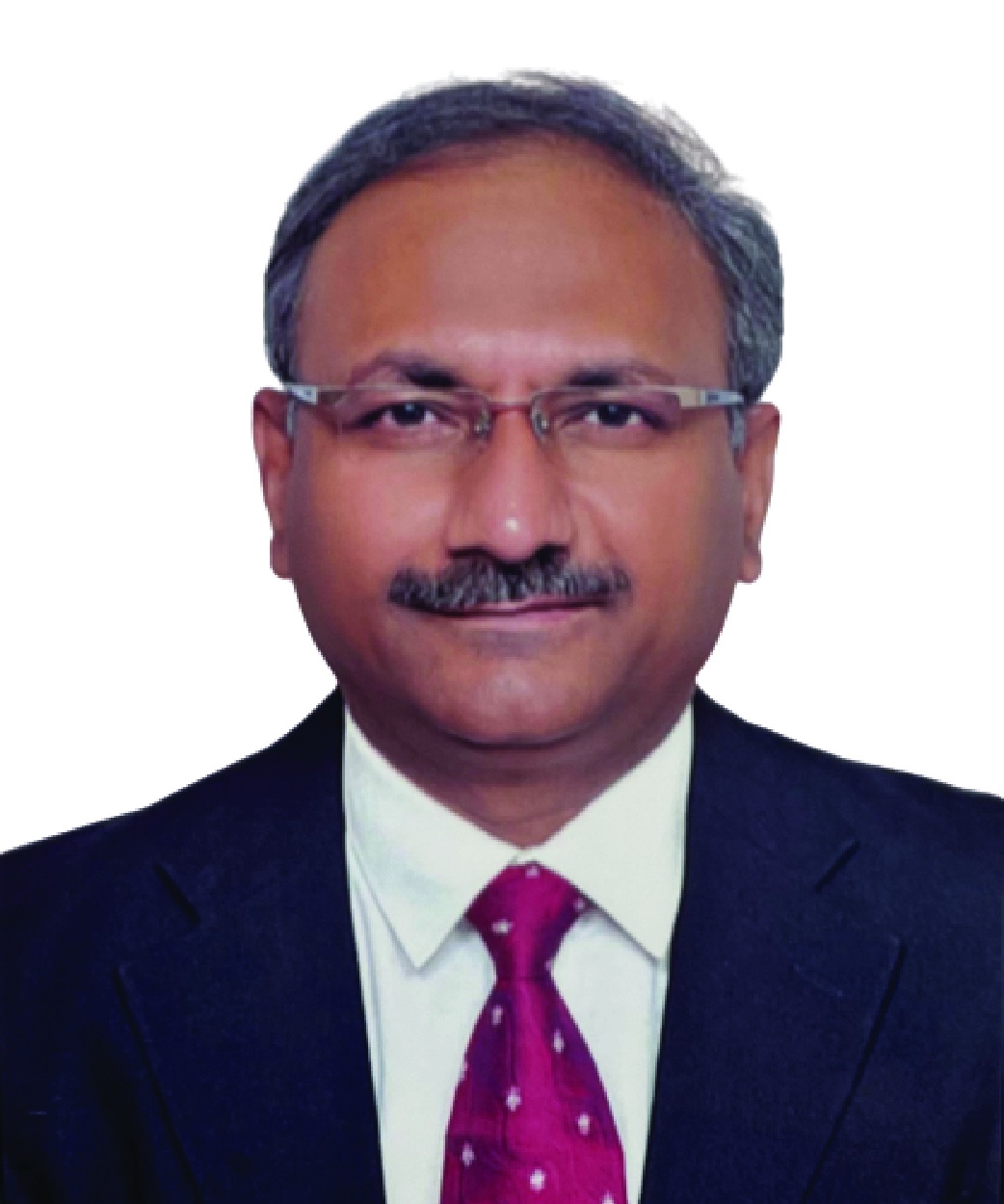
Neeraj Dindore is a telecom professional with over 3 decades of experience in the telecommunications industry. He has vast experience and knowledge about various mobile wireless & fixed network technologies and the associated IT solutions. He has been active in the areas of end-to-end life cycle management of Telecom Networks from Strategy, Engineering & Planning, Deployment, Operations, Performance and Customer Experience Management across Mobile & Fixed Networks in India. He is currently the Vice President for 5G Private Networks Engineering, Development & Services in Tata Communications. Prior to this he has worked with companies like TATA Teleservices Ltd as Group CTO, BPL Mobile as Head of Network Planning & Engineering, Indian Air Force in RADAR & Telecommunications. He is also one of the founding and Governing Council members of TSDSI.

Cristian leads the APAC regional engagement with governments on policy and regulatory matters as part of the Viasat team. He has over 20 years of experience in wireless policy and spectrum regulation.
Prior to joining Viasat, Cristian held senior policy and regulatory roles within the ITU Radiocommunication Bureau, the mobile industry and the New Zealand spectrum regulator. He has represented New Zealand at WRCs and Asia Pacific regional forums including APT.
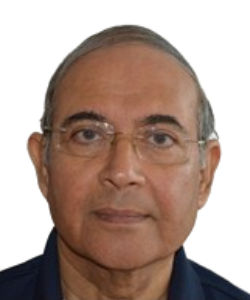
Mr. Rajesh Mehrotra retired in 2010 from the Radiocommunication Bureau (BR), Space Services Department (SSD), ITU Headquarters in Geneva, as Senior Radiocommunication Engineer & Counsellor. He worked in ITU from 1997 to 2010 and was `inter-alia’ responsible for regulatory and technical analysis of space filings for `Coordination and Notification’ of satellite networks. He was ITU/BR Counsellor for WRC-03 and WRC-07.
Master of Engineering (Electronics & Communication) from the Indian Institute of Technology (IIT), Roorkee, India, he was Joint Wireless Adviser to the Govt. of India and did two ITU/UNDP Missions in Nepal and Bhutan as `Senior ITU Expert’ in 1992 & 1995 respectively.
In 2011/2012 he undertook the preparation of `A Roadmap for ITU’s Wireless Broadband Masterplan’ for the four countries, Myanmar, Samoa, VietNam & Nepal and also for the Asia-Pacific region, in general, as a mission under the ITU Regional Office in Bangkok.
Since 2010 he is the Founder and Principal Consultant, `Redbooks Consulting Pvt. Ltd.’ - a radiocommunication/satellite Advisory. He is providing regulatory and technical guidance to global satellite organizations besides counselling on matters concerning use and management of radio spectrum & ITU’s Radio Regulations.

Mr. Pawan Garg is former Wireless Adviser to the Government of India (head of national spectrum management organization) and was internationally elected Member* of the Radio Regulations Board (RRB) of International Telecommunication Union (ITU), Geneva from 2006 to 2014 (elected as Chairman of the Board for 2013). ITU is the specialized body of UN system for ICT issues. This specialized ITU Board resolves various issues concerning implementation of ITU Radio Regulations, an international treaty, for planning and use of RF spectrum & satellites globally. Mr Garg has more than 45 years of experience in spectrum management and planning of various radiocommunication services – both terrestrial as well satellite based services. Also during his term as Wireless Adviser to Govt. of India (2002 – 2008), exponential growth of cellular mobile services took place in India and achieved the critical mass for further large growth. Mr. Garg has widely traveled since 1980 and represented India on the Governing Council of ITU. He has chaired as well as spoken at large number of national and international conferences in his field and published many papers on related issues.

Peng is the Vice President of Policy & Regulatory at GSOA, where he leads advocacy efforts around spectrum management, licencing, and national policy initiatives. With experience in telecoms, mobile, and satellites, he has advised governments and industry players globally. Previously at Eutelsat OneWeb, Peng shaped licencing frameworks for Low Earth Orbit constellations and satellite regulatory procedures for WRC-23. At GSMA, he ran a global campaign to improve spectrum licensing conditions for mobile operators, leading a global team of policy expert to engage with policymakers across developing markets. Peng holds a Master’s in Telecommunication from the Swiss Federal Institute of Technology and an Executive MBA from London Business School. He speaks English, Mandarin, and French fluently.
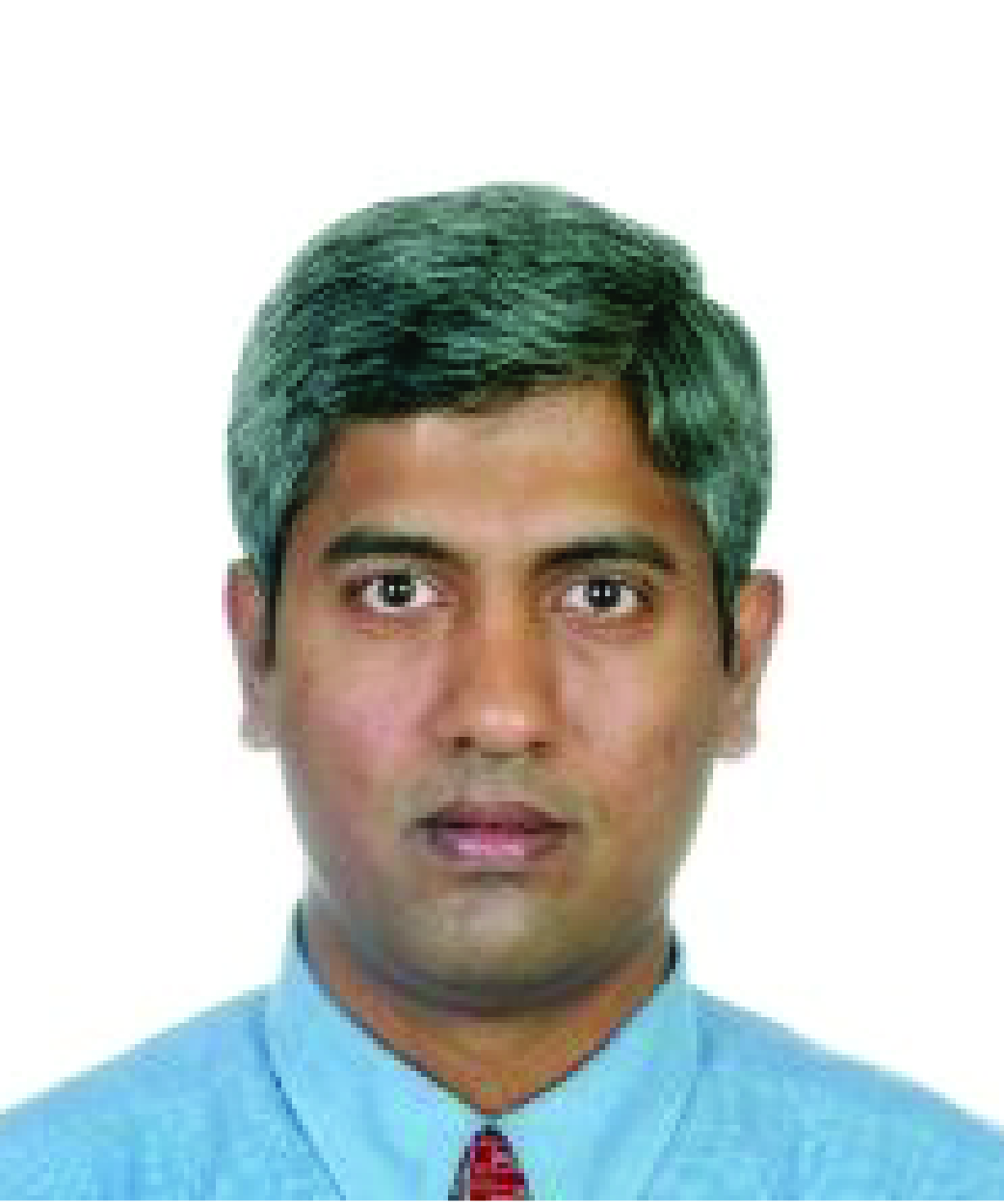
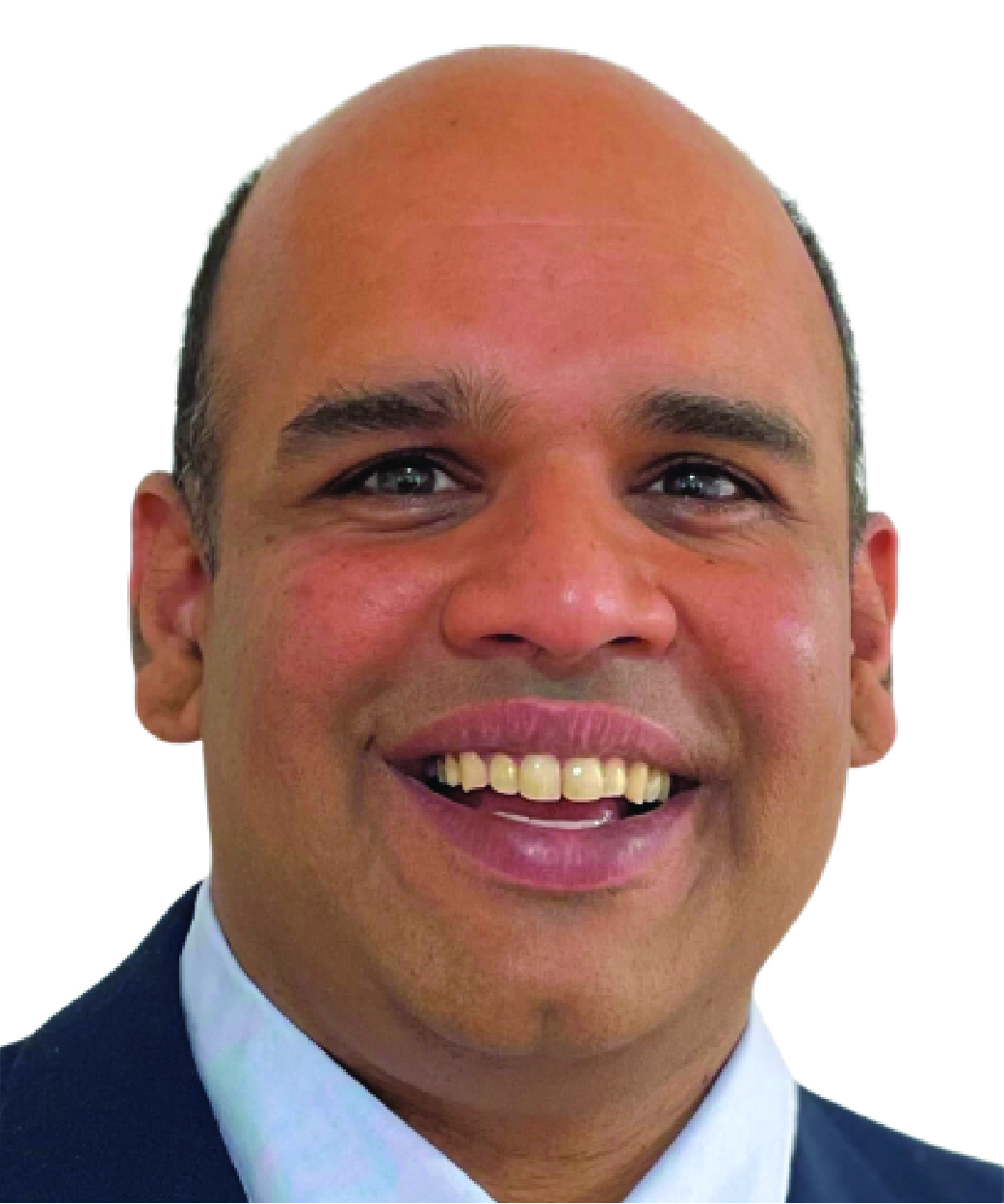
Dr. Venkatesh Ramaswamy is Chief Technologist for NextG at MITRE Labs in Bedford, Massachusetts where he currently leads technical innovation and R&D activities in 5G/xG technologies. He has more than 20 years of experience in the telecommunications industry and has held technical leadership positions at top technology companies, startups, and research labs. Currently he serves as one of the active industry members of the ATIS/Next G Alliance Research Council (Next G Alliance Research Council – Next G Alliance) working on the development of a comprehensive North American 6G strategy. He also an industry researcher at the NSF Edge AI Institute looking at synergies between networking and AI (Organization and Key Personnel | NSF AI Institute for Future Edge Networks and Distributed Intelligence (osu.edu)). He has published more than 50 peer-reviewed publications and patents, served as a TPC member for various conferences, and participated in several technical panels. He received his PhD in Electrical Engineering in 2007.

Current position: Currently working as Engineer in WPC Wing.Also working as Coordinator of WG-4 of NPC-23, Which is dealing with the agenda items related to Satellite issues under the chairmanship of Mr. M. K. Pattanaik.
Past experience: Worked as a Engineer Satellite. Where I looked after the Satellite Licensing and allied issues. Before joining Satellite Section of WPC Wing was involved in the processing the requests for frequency assignment for terrestrial services including Maritime Mobile and Aeronautical mobile Service.

Bashir Patel is Inmarsat’s Regional Advisor for the South Asia, Middle East and Africa (SAMEA) region. He is widely recognized as a highly experienced executive in ICT, satellite systems and defence aerospace. He has over 35 years experience in the high tech industry, working mainly in the telecom sector including satellites and defence industries, both in management consulting as well as in regional regulatory policy, business and market development. He has been working with the Governments throughout the regions and launched satellite communications technologies as far back as mid 1980’s. He is a passionate technologist with experience gained from his time spent in advance aerospace projects in BAe Systems, Inmarsat, ICO Global Communications and prior to re-joining Inmarsat in 2013 as the Chief Operating Officer (COO) of the Commonwealth Telecommunications Organisation (CTO), dealing with 54 Commonwealth Governments around the world.
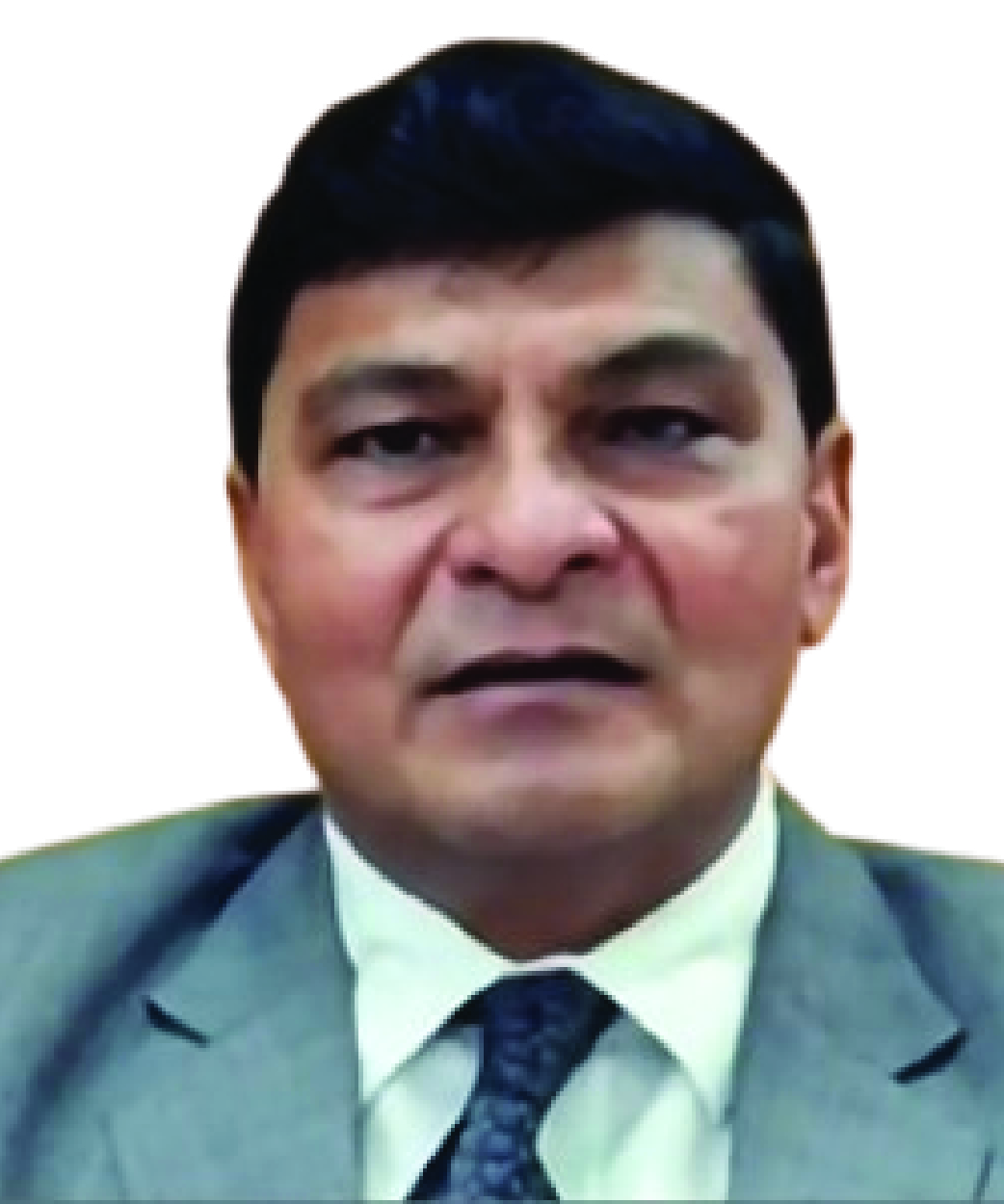
Dr. P.D. Vaghela joined as Chairman, Telecom Regulatory Authority of India (TRAI) on 1st October, 2020. Prior to joining TRAI, Dr.Vaghela was Secretary, Department of Pharmaceuticals, Ministry of Chemicals & Fertilizers. Dr.Vaghela had graduated in Commerce in the year 1982. He did his M.B.A (Master of Business Administration) with specialization in Financial Management in 1984 and also obtained M.A in Development Studies (Public Policy & Management) from the Institute of Social Studies, the Hague in the Netherlands in the year 2005. He was decorated with a Doctorate in the year 2013 in Public Management and Policy by Sardar Patel University, Anand, Gujarat.
He joined Indian Administrative Service [IAS] in 1986. He has held various assignments starting from District level to State level, during which he had won a number of awards for excellence as best Collector & District Magistrate 86 District Development Officer. In his assignment as Chairman, Kandla Port (2008-2013), the port was awarded as the best port for five years of his tenure. He worked as Chief Commissioner of Sales Tax, in Gujarat, during which period he has played a major role in drafting GST law, its rules and fixing GST rates of goods and services as Convener of national level GST Law and GST Fitment Committees. He was closely involved in the GST implementation at national level as a key member of GST Implementation Committee.
As Secretary Pharmaceuticals, he has launched four ambitious schemes to transform the sector. He also worked as Convenor of Empowered Group 3 (now EG2) which handled availability of critical medical supplies like PPE, N-95, Ventilators and testing kits. Today India is exporting these items for which India was otherwise dependent on imports during pre-covid time. In May, 2018 Dr. Vaghela was honoured by Hon'ble Prime Minister of India for excellence in Public Administration while appreciating his contribution in implementation of GST in India.
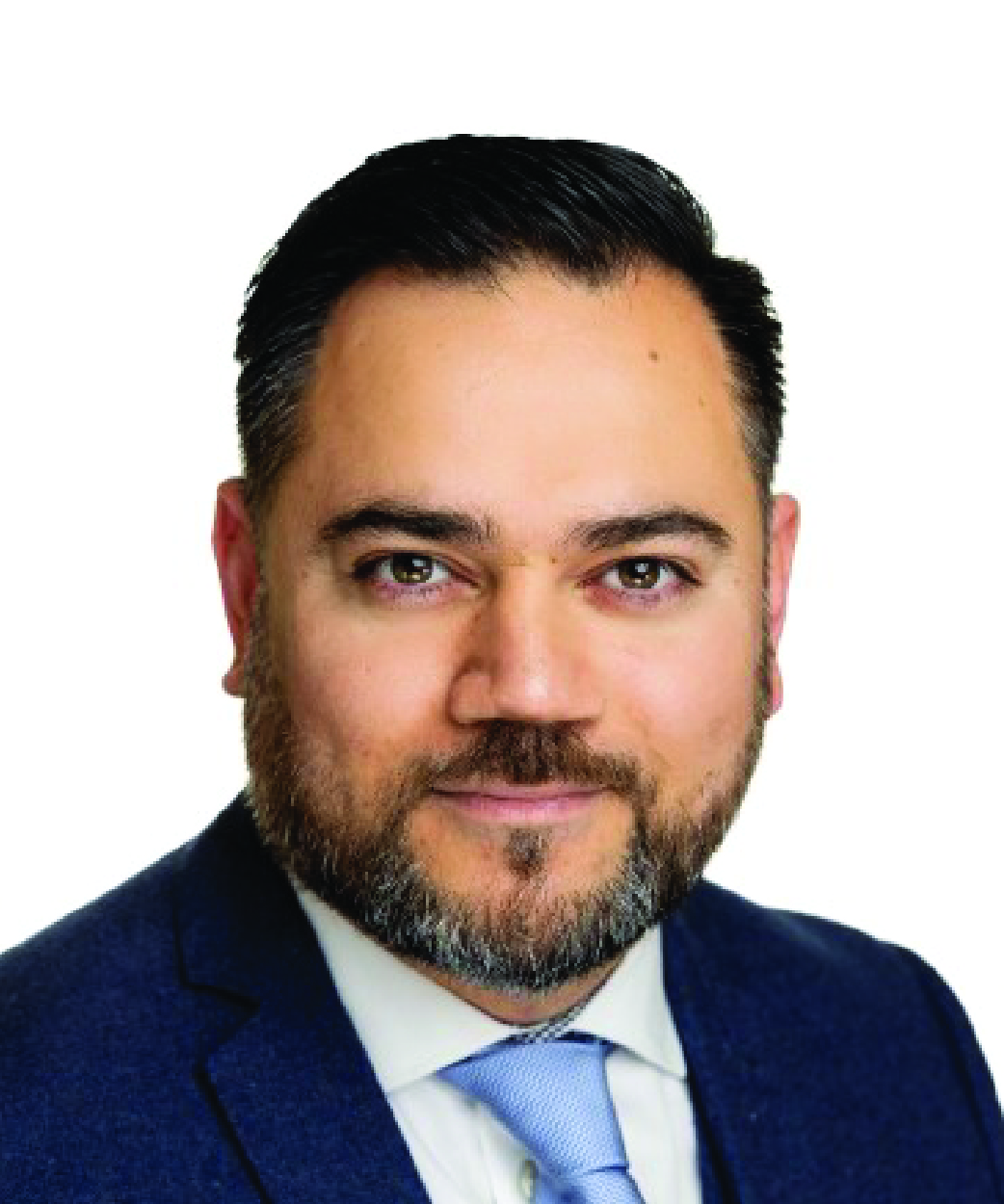
Mohaned Juwad is responsible for assisting Intelsat’s strategic long-term spectrum position in the marketplace. In his role, he works closely with the company’s vice president on corporate and spectrum strategy and the spectrum strategy team to analyze and identify emerging spectrum opportunities and risks for Intelsat. In addition, he is responsible for managing efforts from Europe, Middle East and Africa that protect, optimize and leverage the company’s spectrum assets in support of Intelsat’s broader long-term growth strategy.
Dr Juwad has over 10 years’ experience within the satellite industry where he held various roles in the past. Prior to rejoining Intelsat in 2016, Dr Juwad served as manager, regulatory licensing and market access, at Avanti Communications Group Plc where he was responsible for managing and acquiring licensing and authorization for Ka-band geostationary satellite services across Europe, Middle East and the Africa region, in addition to overseeing regulatory activities at the ITU, CEPT, and other regulatory bodies. Before that, he worked as a consultant where he worked in ESA funded projects to develop the DVB-S2 standard operating in Ka-band, and also developed Ka-band mortised terminals where he was instrumental in developing a commercial self-aligned antenna.
Dr Juwad earned a Philosophy of Doctorate (PhD) from Isambard Kingdom Brunel University and a Bachelor of Science Degree in Electrical Engineering at Herefordshire University.
Intelsat S.A. (NYSE: I) is the world’s leading provider of satellite services, delivering high-performance connectivity solutions for media, fixed and mobile broadband infrastructure, enterprise and government and military applications for more than 50 years. Intelsat’s satellite, teleport and fibre infrastructure is unmatched in the industry, setting the standard for transmissions of video and broadband services. From the globalization of content and the proliferation of HD, to the expansion of cellular networks and mobile broadband access, with Intelsat, envision your future network, connect using our leading satellite technology.
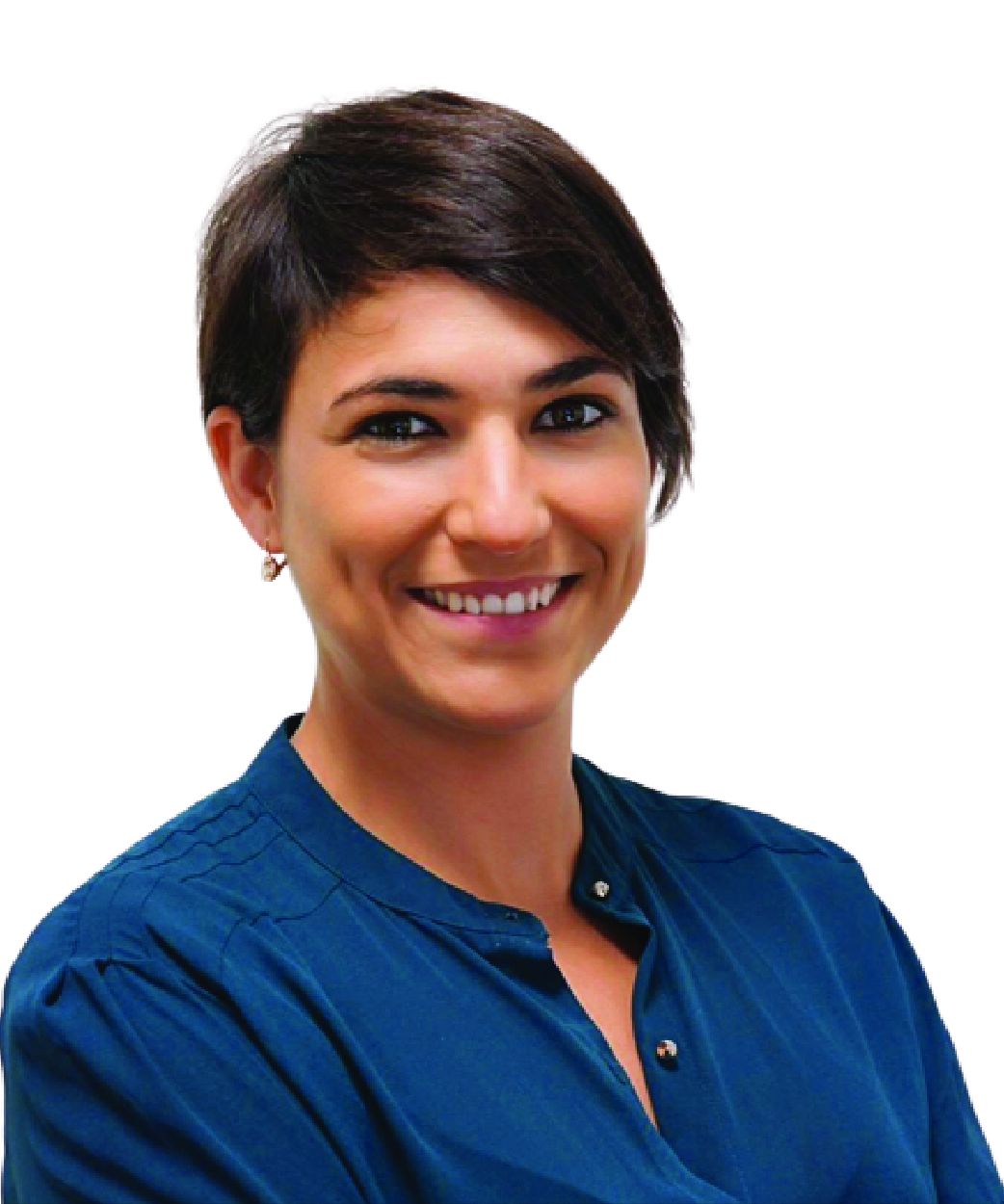
Isabelle Mauro is Director General of the Global Satellite Operators Association (GSOA) that represents the interests of 29 global and regional satellite operators. She reports directly to their Chief Executives.
Under Isabelle’s leadership, GSOA and its member CEOs lead the effort to showcase the benefits of satellite communications for a more inclusive and secure society – vital to bridging the world’s digital divide, achieving the UN’s Sustainable Development Goals and realizing the 5G ecosystem.
Isabelle has 25 years experience in the Telecoms and Technology sector, starting at the GSMA, where she was responsible for government and international Affairs. In 2015 she moved to New York to join the World Economic Forum as Head of Information, Communications and Technology Industries, managing the portfolio for 60+ Tech companies globally and leading initiatives on inclusive and sustainable digital transformation.
Isabelle is passionate about inclusion and sustainability. She is Chair of the High-Level Advisory Board of the DigitalGoesGreen Foundation. She also sits on the Advisory Board of Women in Tech and is a member of the UNESCO Advisory Group for the Declaration on Connectivity for Education.
Isabelle holds an MSc in European Politics and Policy from the London School of Economics. She is fluent in French, English, Italian and Spanish.

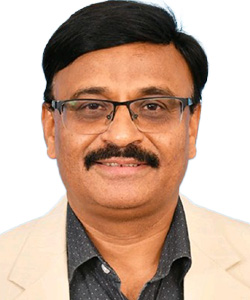
33+ years experience in ISRO in areas of Satcom & Navigation programmes planning, management & implementation, procurement of launch services and insurances, RF systems design, development, system engineering & link analysis. Installation of remote sensing receive and satcom ground stations, configuration design,system engineering & installation & commissioning of VSAT networks, implementation of various satcom applications projects across the country like Tele-education, Telemedicine, Village Resource Centres, Disaster Warning Dissemination System, etc.
Have held the responsibility of planning of space segment, transponders capacity allocation, utilization and pricing as per the Satcom Policy of the country and providing optimum satcom solutions to users.
Held responsibility for Frequency Spectrum Management & Coordination at national and International levels, and satcom planning for ISRO's space programme. Led the group responsible for handling ITU-R activities; presently Vice Chairman of ITU-R Study Group-4; Chairman SWG 4C4 of WP 4C; Chairman of National Study Group 4 for satellite services; extensive contributions to WP 4C, WP 5D, CPM 19-2, APT conference group for WRC-19 (APG-19), WRC-19, RA-19, etc; coexistence studies between satellite and 5G services at national & international level, etc.
Presently on deputation to IN-SPACe, Ahmedabad as Director, Program Management and Authorisation with a responsibility to enable and facilitate the Indian Non-Government Entities to use ISRO facilities and support along with authorizing their space activities in the country.
Specialties: Frequency Spectrum Management and Coordination, ITU-R activities, coexistence studies between terrestrial (including 5G) and satellite services, Satcom & Navigation satellites planning and projects management, transponders capacity costing & pricing, earth station RF systems & link analysis and satcom & Navigation applications including Broadcast & VSAT networks
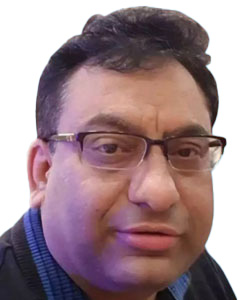
Mr. Ravi Gandhi expert in Public Policy & Regulatory Affairs with a demonstrated career history in the telecommunications industry. Skilled in Business Management, Strategic Planning, Crossfunctional Team Leadership and Management
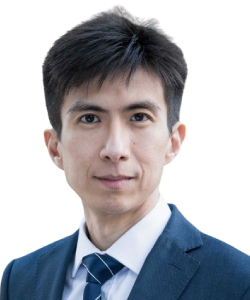
Yishen Chan is Director, Spectrum (APAC), at the GSMA. He is responsible for the GSMA’s efforts to support its members in the Asia Pacific region on policy and regulatory matters relating to radio spectrum and its management.
Yishen has over 15 years’ experience in policy and regulatory issues in the telecommunications, media and technology sector. Prior to joining the GSMA, Yishen was a director at Plum Consulting where he specialised in spectrum management issues, such as allocation, valuation and pricing of spectrum for mobile and other uses, cost benefit analyses and impact assessments of policies and regulations relating to mobile and other wireless technologies. He has led numerous consultancy projects for governments, regulators and industry players around the world, including Australia, Hong Kong, Malaysia, Mexico, New Zealand, Saudi Arabia, Singapore, Taiwan, Thailand and the UK.
His previous experience also includes roles within regulatory authorities in Singapore and the UK. Yishen has an MSc in Media and Communication Governance (Distinction) from the London School of Economics, and a BA in Economics and Philosophy from the National University of Singapore.
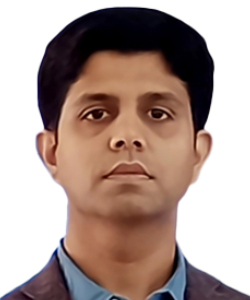

Peng is heading the APAC Government Affairs team in OneWeb. He is an experienced telecom public policy executive, with focus on licensing and spectrum policy for both mobile and satellite industries, advising governments and telecom industry globally.Before joining OneWeb, Peng was responsible for the GSMA's global campaign ensuring optimal licensing conditions for mobile operators. He was leading a team of policy experts across Africa, Asia Pacific, Latin America and Middle-East to engage policy makers and regulators, and advocated for industry's best practices on telecom policy.He recently obtained an Executive MBA at London Business School. He has an engineering background, and hold an MS in Telecommunication Systems from Swiss Federal Institute of Technology of Lausanne. Besides English, he speaks French and Mandarin fluently.
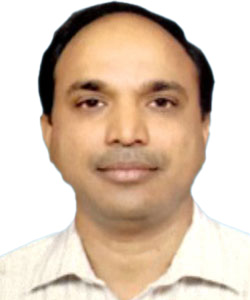
Mr. Meghwal is Bachelor of Engineering (BE) in Electronics and Communications in 1996 with 66% marks from M. B. M. Engineering College, Jai Narayan Vyas, University, Jodhpur, Rajasthan.
Master of Engineering (ME) in Digital Communications in 1998 with 70% marks (Thesis Pending) from M. B. M. Engineering College, Jai Narayan Vyas, University, Jodhpur, Rajasthan.
Heading SACFA division in WPC Wing which is a Standing Advisory Committee on Frequency Allocation to different commercial and non-commercial usages.
Heading ASMS division in WPC Wing having automated spectrum management system (ASMS) and technical analysis involved in efficient spectrum management. ASMS also maintains National Frequency Register (NFR) for all frequency assignments in terrestrial geography.
Year Sept., 2015 – April, 2020
Position held: Deputy Wireless Adviser to the Govt. of India, WPC Wing, Department of Telecommunications, Ministry of Communications.
Year November 2011 – Sept, 2015
Position held: Engineer-in-Charge/Assistant Wireless Adviser to the Govt. of India, WPC Wing, Department of Telecommunications, Ministry of Communications.
July, 1999 – November, 2011
Position held: Engineer, WPC Wing, Department of Telecommunications, Ministry of Communications, Government of India.
November, 1998 – July, 1999
Position held: Inspector(Wireless), Rajasthan Police Government of Rajasthan.
Participated in International level meetings/ Trainings/ seminars/ Conferences.


Dr. Cosmas Luckyson Zavazava took office as Director of the Telecommunication Development Bureau (BDT) at the International Telecommunication Union (ITU) on 1 January 2023.
With more than 30 years in telecommunications, including over 20 years in ITU's Development Sector, Dr Zavazava has promoted and implemented impactful information and communication technology projects around the world.
Prior to his election as BDT Director, he served as ITU's Chief of Partnerships for Digital Development, overseeing development-related projects, strategic partnerships, and resource mobilization between 2019 and 2022, while launching new initiatives that have boosted the engagement of industry, private-sector, and academia members in ITU's work.
From 2010 until 2019, he was Chief of the Projects and Knowledge Management, responsible for ITU's project portfolio, statistics, capacity building, and emergency telecommunications activities, as well as coordinating special assistance to least developed countries (LDCs), landlocked developing countries (LLDCs), and small island developing states (SIDS).
Previously, as ITU's Chief of Projects and Initiatives, he oversaw development projects focused on gender, youth, and people with special needs, along with capacity building, emergency telecommunications, climate change mitigation and adaptation, and e-waste management.
Earlier, Dr Zavazava headed the Republic of Zimbabwe's Government Telecommunications Agency and served as a senior diplomat. He also taught MBA classes at the UK's Nottingham Trent University. Throughout his career, he has focused on closing the digital and skills divide and accelerating digital transformation to achieve socio-economic development for all.
Dr Zavazava holds a PhD in Multilateral Trade from Business School Lausanne (Switzerland), and a Master of Laws degree in Telecommunications and Information Technology from the University of Strathclyde (UK), as well as a Master's in International Relations from Webster University (US), and an MBA from the University of Zimbabwe. He also holds a Bachelor's in Business Administration and diplomas in Telecommunications and Systems Engineering

Jennifer A. Manner is Senior Vice President of Regulatory Affairs at EchoStar Corporation where she is responsible for leading the domestic and international regulatory and government affairs team; developing and implementing domestic and international regulatory and legislative strategy and campaigns including on technology, spectrum, licensing, trade, broadband, standards, 5G, 6G and cyber security; managing company-wide global spectrum assets; representing the company before a range of international organizations including the ITU, the World Trade Organization and the UN; developing long-term company strategy for spectrum-rights including for ITU rights and licensing; managing the company-wide standards strategy, including at 3GPP; representing the company before senior level government officials domestically and internationally; advising corporate strategy team on possible opportunities; leading the company’s efforts at trade associations; providing briefings to Board Members and Senior Management; and working with press team on company messaging.
Prior to this, Ms. Manner held senior positions at the U.S. Federal Communications Commission, including as Deputy Chief of the Public Safety Bureau and the Office of Engineering and Technology and Senior Advisory to Commissioner Abnernathy and leading companies.
Ms. Manner has published several books on telecommunications issues including on spectrum and foreign market access, as well as scholarly articles. Her most recent book is Spectrum Wars: The Rise of 5G and Beyond (Artech House, 2021). Ms. Manner holds key leadership roles in the ITU-R sector, and trade associations. Ms. Manner is currently the chair of the Commerce Spectrum Management Advisory Group, Vice Chair of the International Trade Advisory Group, Group 8 (digital goods), Chair of the Precision Agriculture Task Force, Deployment Working Group, Chair of Sub-working group 2 in ITU-R WP4C and CITEL (Americas) Co-Chair for the ITU-R WRC 2023 Network of Women Initiative. Ms. Manner also serves on the FCC’s Technology Advisory Committee and Cyber Security Interoperability, Reliability and Security Advisory Committee. Ms. Manner also serves on the Bermuda Space Council among other bodies. Ms. Manner is also an award-winning documentary film producer.
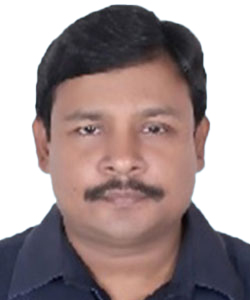
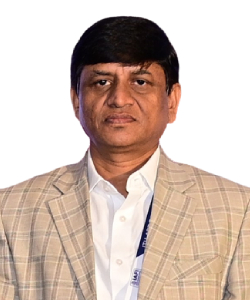
Shri. Gulab Chand holds Bachelor of Engineering (BE) degree in Electronics & Communications from NIT, Durgapur, joined IRRS service, as a Group-A officer 1992-batch in the WPC wing of Department of Telecommunication. Presently, Shri Gulab Chand is working as a Joint Wireless Advisor in the WPC wing. He has more than 30 years of experience in spectrum management. Shri Gulab Chand has a fair understanding of the field of radio-spectrum management/regulations, as worked in the RF spectrum monitoring for 5 years. He participated in various ITU-R meetings held time to time on behalf of Indian Administration. He played a major role in various spectrum auctions in India since 2015.
Shri. Gulab Chand is a highly experienced officer in the telecommunications sector and well known for his expertise in policy formulation, regulatory, licensing and spectrum auction work.
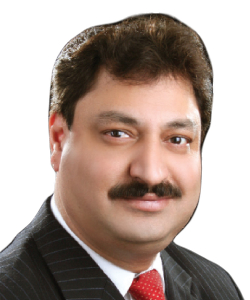
During a professional career spanning over 30 years, Sanjay Bakaya has worked in diverse areas of the telecom industry. He spent the initial 14 years of his career at Motorola, Inc., then moved to Vanu Inc. before joining Mavenir. He is currently country head, India, and regional vice-president, India and South Asia at Mavenir. From 2008 to 2010, he also held the position of secretary general, Telecom Equipment Manufacturers Association (TEMA).
As country head, Bakaya helps his team make positive contributions to organisational growth while developing trust and goodwill with customers. “I hunt for new customers and help in their growth through our company’s technology, concepts and products. We aspire to cater to all customers – big or small,” he says.
Going forward, Bakaya aims to tap opportunities in the infrastructure, 5G, Open RAN and cloud-native domains. However, he describes right pricing of 5G spectrum, security concerns around 5G and seamless multicloud-enabled infrastructure as key challenges in the industry.
Bakaya believes that telecom is developing at such a fast rate that telcos are constantly reviewing their business models and assessing their required skills. He feels that enhanced mobile broadband (eMBB), the transformation of telcos into “techos”, aggressive fiberisation and satellite backhaul for rural broadband connectivity will drive innovation for telcos in the coming years.
While Bakaya has had many memorable moments during his career, he specifically remembers his first deal as a sales leader. “It was a $100 million contract for swapping and expanding the 2G cellular service network for an operator for two metros. The team hit a roadblock in the first hour itself. However, my technical and customer teams managed to overcome the technical challenge in the last five minutes, and we went live with the migration of all commercial customers to a new network,” Bakaya remembers.
He describes his management style as persistent and focused and feels that his primary strength lies in being self-motivated. “I believe in hard work with a never-say-die attitude,” he says.
Bakaya has a BE degree in electronics and telecommunications from the National Institute of Technology, Srinagar. He likes to stay abreast with world news and describes watching television as his main stress-buster. “I also enjoy listening to old, classic songs and reading articles on cutting-edge technology,” he says. His family comprises his wife and two daughters.

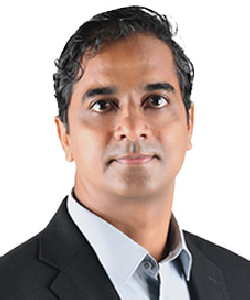
Suresh Chitturi is the leader of the Standards team in the Advanced Research Division of Samsung Research Institute Bangalore. The team focus areas include research and standardization of emerging technologies in the areas of mobile services, security, and convergence standards. He received his Bachelor's degree in electronics and communications, from University B.D.T. College of Engineering, India, followed by an M.Sc. degree in computer science from the University of North Texas. He has over 15 years total experience in the mobile industry, including over 12 years of experience in defining emerging technology standards. He is currently the Vice-Chairman of the 3GPP SA6 Working Group on Mission-Critical Applications, and has played an instrumental role in steering SA6 to completion of the MCPTT functional architecture in Release 13. Prior to Samsung, he worked at BlackBerry USA (2006–2013) and Nokia Research Centre, Dallas, Texas (2000–2006), responsible for mobile web and services standards. His current interests include public safety, loT, and vehicular communications.

Sreenivasa Reddy is a Senior Director of Engineering at Microsoft, where he leads technology, R&D, standardization, and regulatory engineering in mixed reality, as well as Metaverse areas in India and APAC, the Middle East, and Africa. He has about 32 years of technology experience across wireless, wireline, optical, and telecom power domains.
Prior to this, Sreeni was part of the Apple India leadership team, heading the regulatory, technology, spectrum, and standardisation functions. He was with Ericsson India as VP & Head of Government and Industry Relations; AVP Strategy & Emerging Business with an Indian carrier Aircel; and with Marconi Plc. on a global role handling pre-sales and product management.
Sreeni is an engineer by education and profession and an evangelist of technology by passion. He holds an MBA and an executive management degree from Duke University.
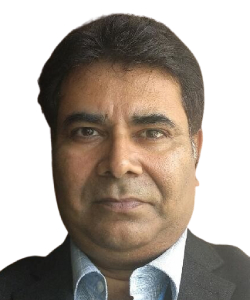
Industry leader with 30 years of diverse experience in telecom industry having served DoT, BSNL (India’s incumbent telco), TEC, British Telecom, Ericsson and Huawei in key leadership roles. Currently working as Head of Spectrum & 6G Engagement, Region India.
Accomplished 3GPP Technology & ITU-R Spectrum standardization expert with outside-in perspective and a good hand at technical analyses and simulations, able to develop immaculate strategy driving a balance among MNOs priorities, Academic research, Industry dynamics, and Policy ambitions.
Active participation in WRC-15 and WRC-19 cycles, in consistent engagement with DoT, WPC, TEC, GSA, GSMA, COAI, MNOs and Industry.
Presently, spearheading WRC-23 strategy for IMT spectrum agenda actively participating in ITU-R/APT, driving harmonized positions in association with GSA/GSMA/COAI/TSDSI/MNOs/OEMs. Actively engaged with Industry, Government (DoT, WPC, TEC, TRAI), TSDSI and industry think-tanks (GSMA, GSA, COAI). Keeping close track of CEPT ECC PT1 and emerging spectrum access paradigms (DSA, eLSA, CBRS) and Open-RAN initiatives, and associated challenges.
Consistently engaged in 3GPP for LTE and 5G NR standards development (RAN, SA) since 2012 and start-to-finish participation in ITU-R IMT-2020 cycle (2014-2020), gaining hands-on experience to system-wide view to technology development lifecycle, exposure to IPR / SEP (FRAND) aspects. Currently, engaged in ITU-R IMT-2030/ 6G development process.

Mr. Ravi Gandhi expert in Public Policy & Regulatory Affairs with a demonstrated career history in the telecommunications industry. Skilled in Business Management, Strategic Planning, Crossfunctional Team Leadership and Management
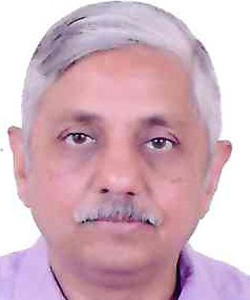
Shri Manish Sinha is a 1989 batch officer of Indian P&T Accounts and Finance Service. In the service, he has had vital experience in dealing with billing systems and the FMS software in MTNL and thereafter he had experience in Banking and Vigilance sections in BSNL. He has worked in Planning and Procurement Division of Department of Telecommunications followed by another stint in DoT as DDG License Finance. He has dealt with the entre gamut of licenses and spectrum during his stay in TRAI for two and half years. In addition, he has also worked for four and half years in the Department of Post dealing with all Postal services, banking, PLI etc. He has been innovative in his approach and managed to make many useful changes in the Department of Post as well as in Department of Telecommunications.
Shri Manish Sinha is an alumni of St. Stephens College at Delhi University wherein he completed his M.A. in History in 1989. Thereafter, he has done a PG Diploma in Financial Management from IGNOU followed by a MBA from University of Birmingham, United Kingdom. Recently in 2016, he also obtained a M. Phil degree from Punjab University as a part of the APPPA programme at IIPA. He was also a recipient of the Silver Medal in this programme. Subject of research for his M. Phil course was ‘Net Neutrality’.
At present, Mr. Manish Sinha has been appointed as Member Finance of Digital Communications Commission, Department of Telecommunications from 15 th July, 2022
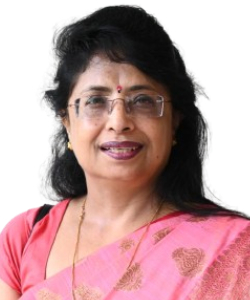
Mrs. Madhu Arora, a HAG grade ITS officer of 1986 batch, has joined as Member (Technology), Digital Communication Commission. Prior to this, she served as CGM, Telecom West Bengal circle from September 2021 to January 2024 and joined as Sr DDG (Licensing), DoT HQ on 01-01- 2024.
Her academic credentials include a Bachelor's degree in Electronics and Communication from Delhi College of Engineering, an MBA from the University of Queensland, and an LLB from Campus Law Centre, Delhi University.
A distinguished graduate of the 1986 ITS batch, Mrs. Madhu Arora has built an impressive 36-year career marked by academic excellence and significant contributions to the telecom sector. Topping the batch, she has consistently demonstrated exceptional leadership qualities. Her pivotal role in restructuring Bharat Sanchar Nigam Limited (BSNL) exemplifies her impact. Recognized for her dynamism, focus, and empathy, she is now in best position to drive the Department of Telecommunications (DoT) towards further advancements in technology and digital communication.
Her appointment underscores the Indian government's dedication to harness top talent to drive innovation and development in the telecommunications sector, reaffirming India's position as a leader in technological evolution and inclusive development.
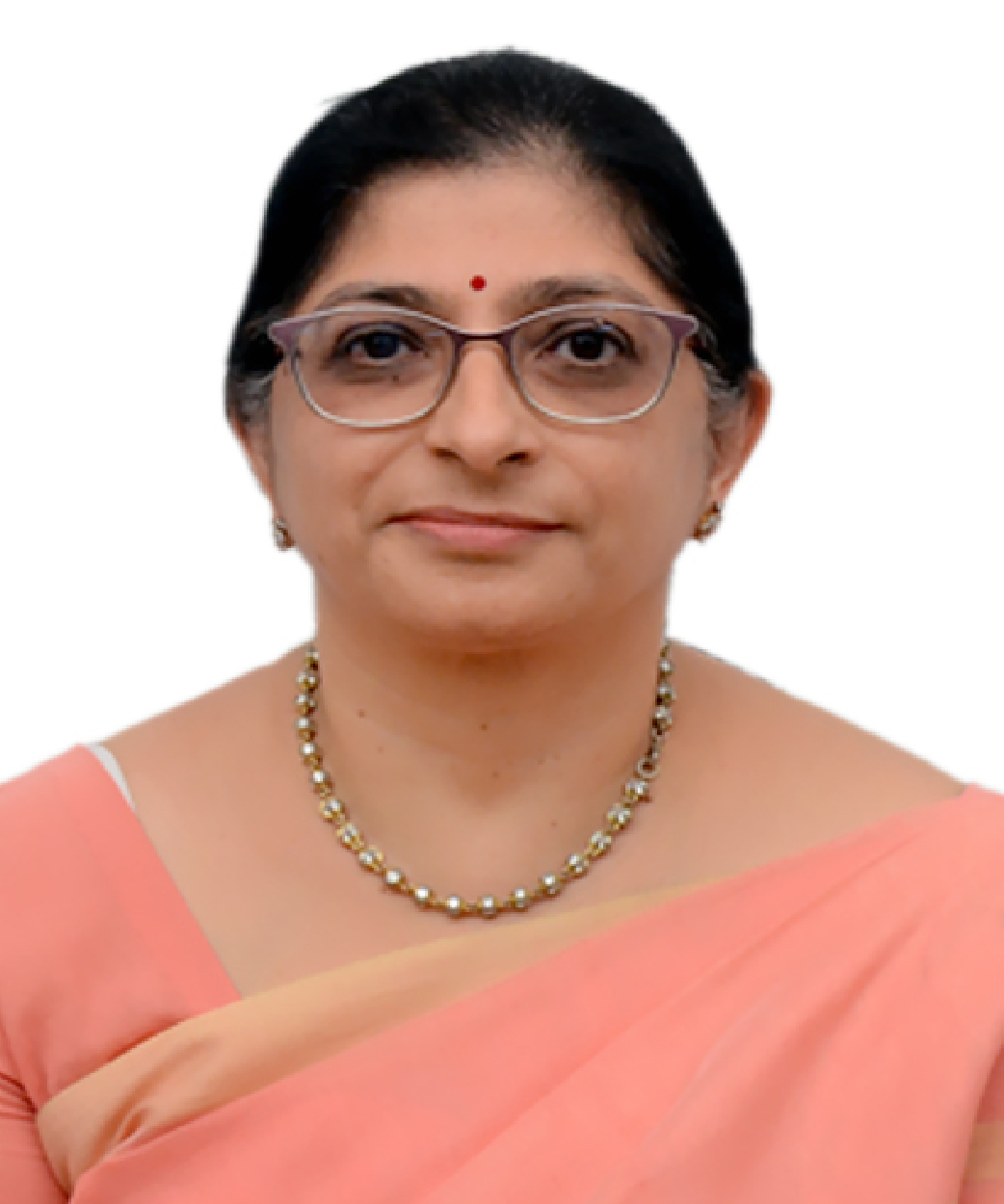
Ms. Gunjan Dave completed her graduation and post-graduation from the prestigious IIT Roorkee. She further pursued an MBA from the esteemed Jamnalal Bajaj Institute of Management Studies in Mumbai. In 1987, she joined the Indian Telecom Services and dedicated more than three decades of her career to MTNL Mumbai, serving in various capacities.
Throughout her tenure at MTNL, Ms. Gunjan Dave showcased her versatility by working across multiple units, including IT, Planning, Installation, Broadband, Mobile, and Call Center operations. She also held the position of Area In charge. Her contributions were instrumental in handling the planning of new exchanges, telecom traffic routing, and the establishment of computerised digital trunk exchanges in Mumbai, as well as the introduction of radio paging services during the early 90s.
With an extensive background in IT, Ms. Gunjan Dave successfully implemented numerous IT-enabled systems such as Customer Relationship Management (CRM) and Billing for Mobile, Network Management Systems (NMS) for exchanges, and Fraud Management Systems. She also played a pivotal role in software development for in- house usage, as well as the creation of customer-friendly applications. Notably, she was involved in significant projects, including the Mumbai Wi-Fi, IT security audits, including SOX audits, and the management of MTNL's data center.
From March 2022 to April 2023, Ms. Gunjan Dave served as the Senior DDG (Senior Deputy Director General) for Gujarat LSA (Licensed Service Area), overseeing Gujarat and the Union Territories of Dadra and Nagar Haveli. During her tenure, she led the successful launch of 5G services in Gujarat and implemented the CBUD app, along with other Government initiatives.
Continuing her upward trajectory, Ms. Gunjan Dave assumed the role of Member (Technology) at DCC (Digital Communications Commission), Ministry of Telecom starting from June 1st, 2023. In this prestigious position, she is responsible for initiating policy decisions, driving technological advancements and strategic decision-making in the telecommunications sector.
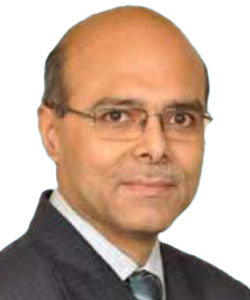

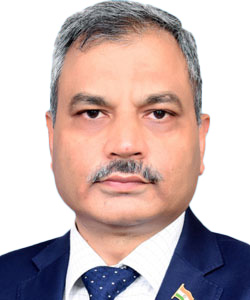
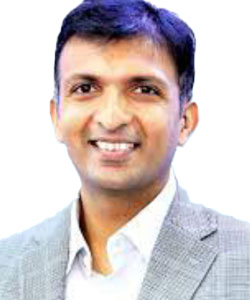
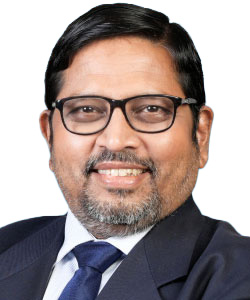


Shiro Fukumoto is the Director of Standardization Department at SoftBank Corp. and assumes a similar role at HAPSMobile, responsible for spectrum-related international standardization activities in ITU-R, APT and 3GPP for both companies. He has around 15 years experience in the telecommunications sector addressing regulatory and technology standardization aspects. He played a leading role in key discussions on HAPS at WRC-19, ITU-R and APT, making major contributions to the establishment of WRC-23 agenda item 1.4 (additional identifications of HAPS frequency bands) as an APT rapporteur, and he is now leading the discussion of ITU-R proposals in HAPS Alliance Telecom Working Group as a leader of ITU Taskforce.

Marta is an accomplished Spectrum Expert at Eutelsat Group, with a specialized focus on NGSO spectrum policy, licensing, and coordination. She has demonstrated a strong commitment to enhancing the company's global footprint, particularly through her efforts in cultivating relationships within the Americas, Africa and recently APAC Regions, advancing Eutelsat Group's worldwide outreach for WRC and spectrum regulation.
Marta has an academic background in Telecommunications and Space engineering from Polytechnic University of Madrid. Her native language is Spanish, and she also speaks English fluently.
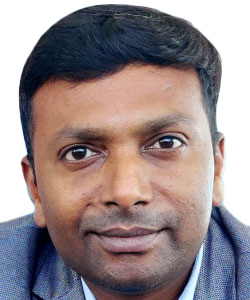

Pranav Roach is president, Hughes Network Systems India Limited, a subsidiary of Hughes Networks Systems, the US based global leader in broadband networks and services, bridging the best of satellite and terrestrial technologies. He serves as a director on the boards of all Hughes companies in India. He was a key member of the team that proposed and successfully completed India’s first book built IPO in 1999 and later India’s first private telecom company IPO in 2001.
More recently, he has been leading Hughes’ new initiative to bring broadband services and applications to rural India through community based computing and connectivity infrastructure to deliver e-governance, internet, interactive education and a variety of e-commerce services.
He continues to serve as a member of the CII National Telecom & Broadband Committee since 2004. He was a key member of the CII Broadband Economy Committee which formulated the report entitled “India’s Broadband Economy: Vision 2010”. He also serves as an independent director on the boards of ‘for profit’ and ‘non-profit’ organizations.
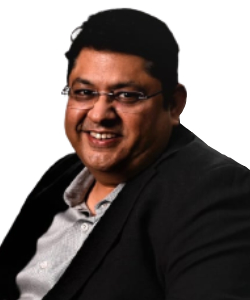
Rahul Vatts is Chief Regulatory Officer (India & South Asia), Bharti Airtel & Director – OneWeb Communications India and Vice Chairman of Indian Space Association (ISpA). He is also Board Director in Indo Teleports Limited & Mobipro, which runs India Mobile Congress.
A telecom & digital industry veteran with over 29 years of experience with leading corporations, Rahul is an expert on Telecom Licensing, Economic & Digital Regulations, Spectrum Management and Regulatory Litigation. He has actively shaped public policy discussion in emerging areas such as data privacy, Open Access, M2M & IoT and content self-regulation. He firmly believes that the aim of policy and regulatory environment should be delivering benefits to stakeholders across value chain viz. consumers, businesses and the Government.
Rahul’s domain expertise has been extensively used in global forums by OneWeb UK, Axiata in Malaysia, Indosat in Indonesia and Dialog in Sri Lanka.
Rahul did his Engineering in Telecommunications from University of Pune and is an alumnus of Indian Institute of Management-Ahmedabad and The Wharton School, Pennsylvania. He has been a member of the Executive Committee of the Cellular operators Association of India (COAI) for more than a decade and is also member of FSMA Global policy group and Spectrum Management group besides being a Governing Council member of various Telecom standardization bodies in India.


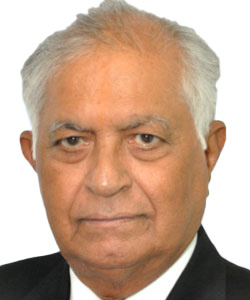
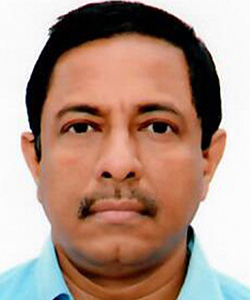

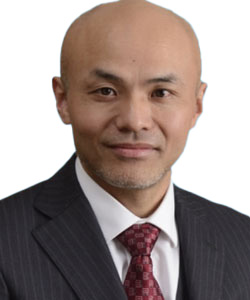

J Sofi, a scientist in ISRO is currently working as Deputy Director for Frequency Management area in, SATCOM Programme Office at ISRO HQ, Bengaluru. She is responsible for frequency management activities which involves ITU filings and frequency coordination for all ISRO missions, Communication satellites, remote sensing satellites ,space science and inter planetary missions and is involved in satellite planning activities. She has contributed towards preparation of inputs to Working Party and WRC’s towards augmentation of orbit-spectrum resources for ISRO missions. Her contribution has been significant in obtaining the extension of validity period of satellite networks during previous WRC, WRC-19.
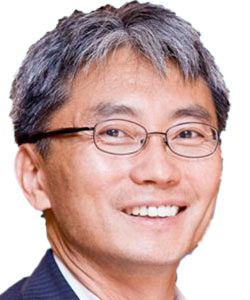
Dr. Kyu-Jin Wee was elected as the chairman of the Asia-Pacific Telecommunity (APT) ConferencePreparatory Group for the World Radiocommunication Conference 2023 (WRC 2023). Dr. Wee has been participating in WRC events since 1995 as a delegate of Korea and worked to improve the country's rights in using radio waves. He served his first four-year term as the chairman of the preparatory group from 2016 to 2020. He is also a vice-chair and chairman of Woking group General aspects of the ITU-R Working Party 5D.
Major International Positions:
